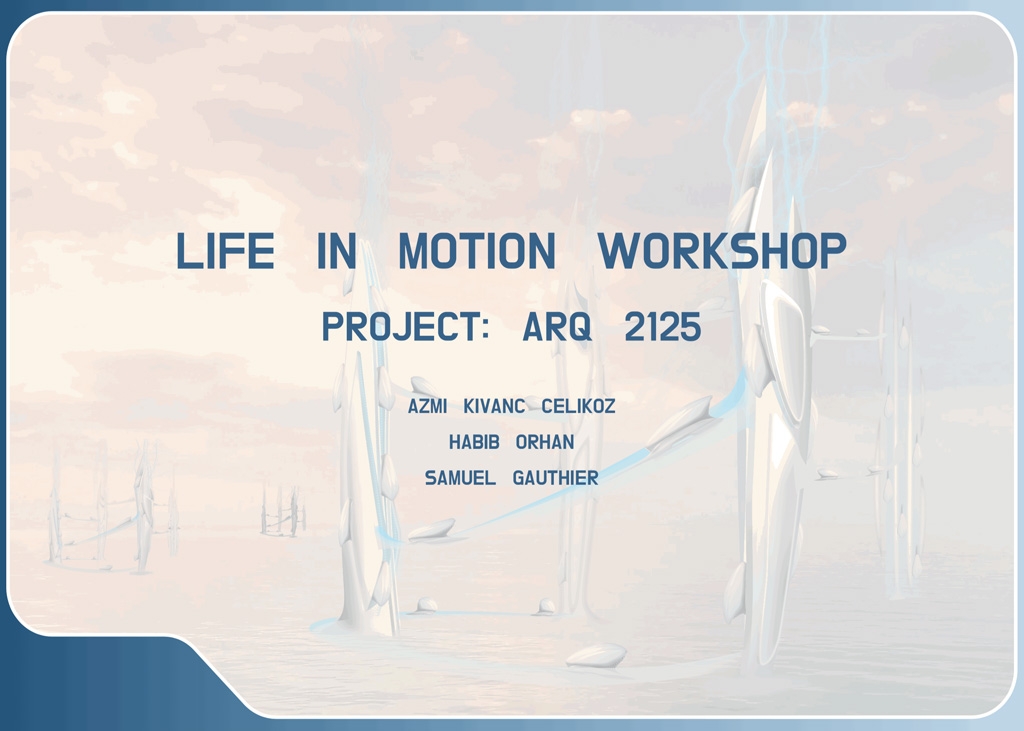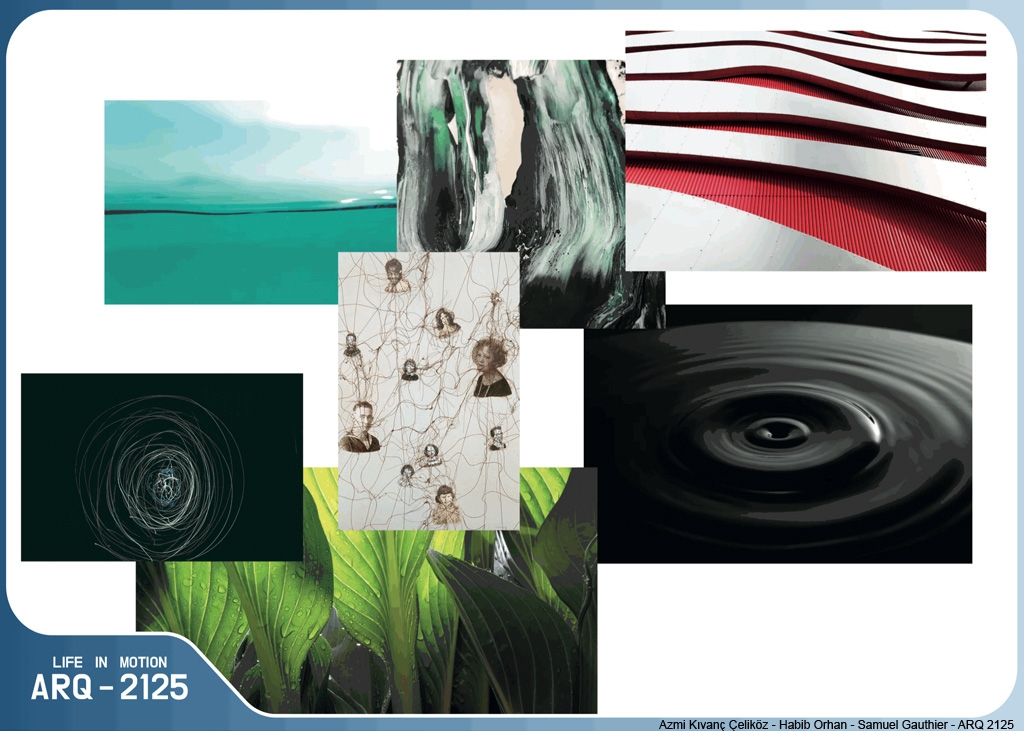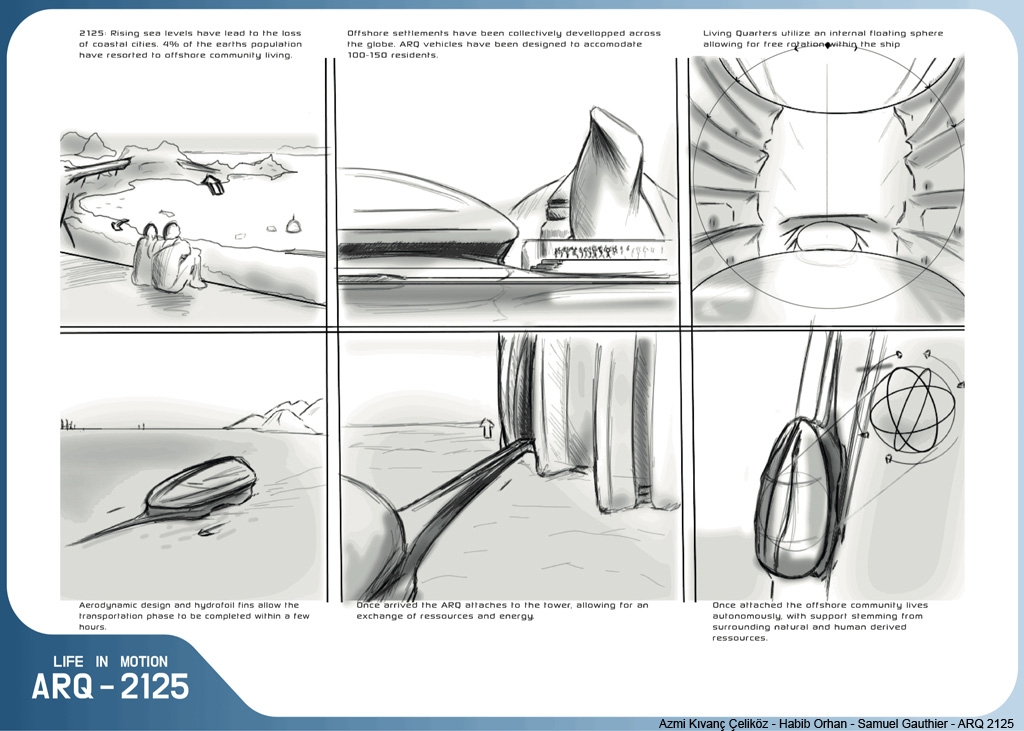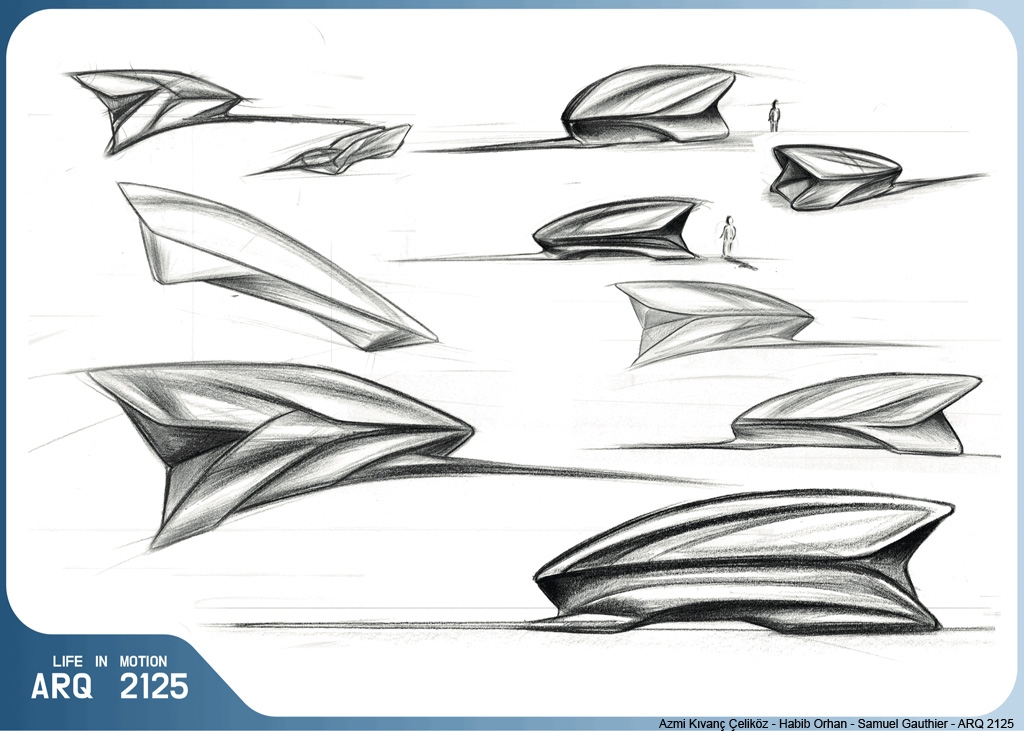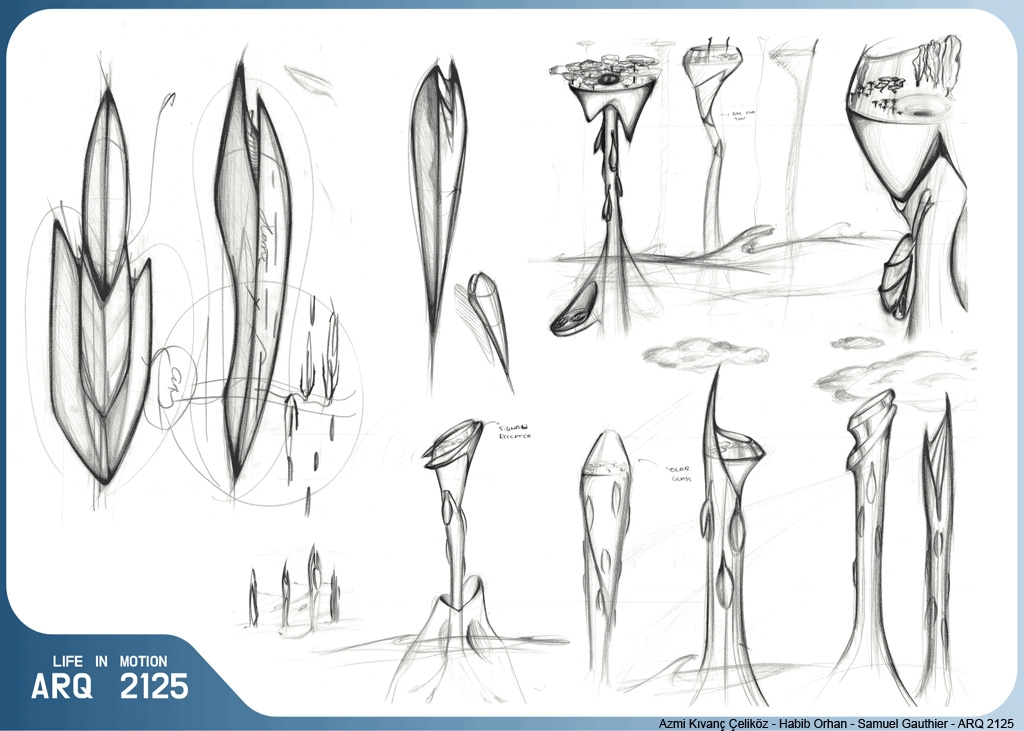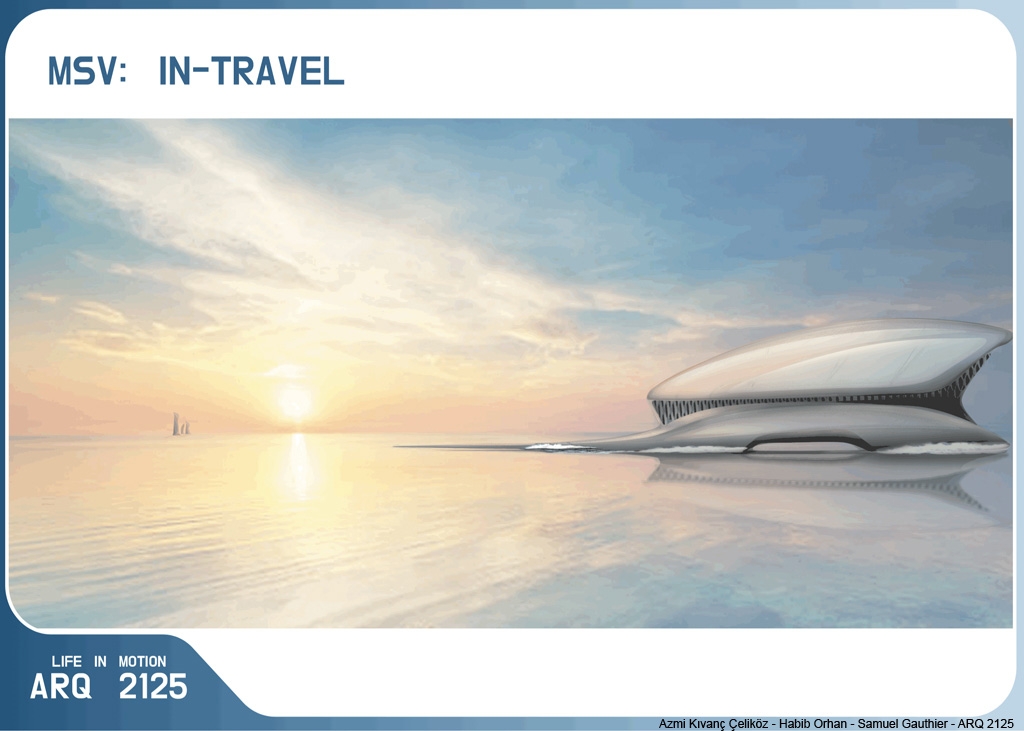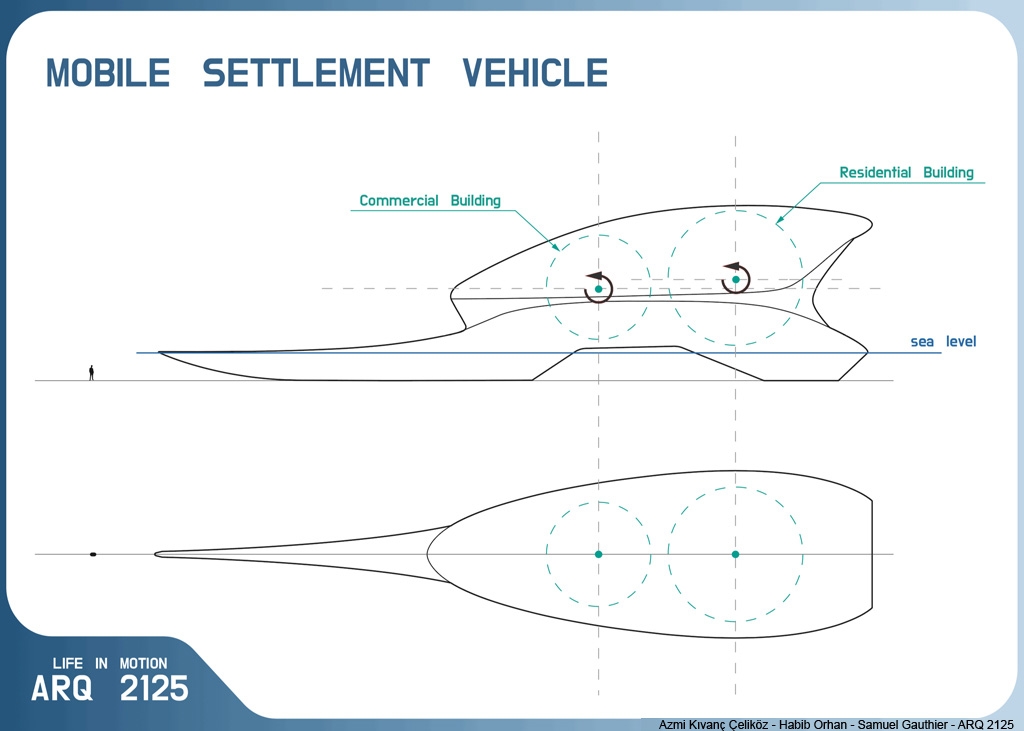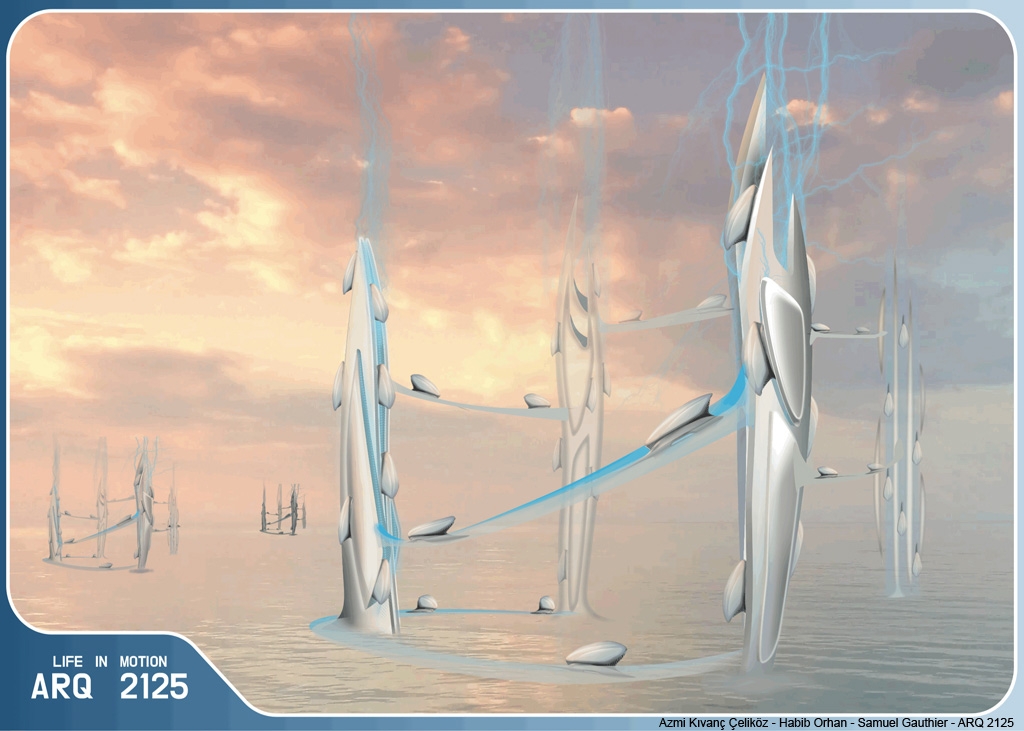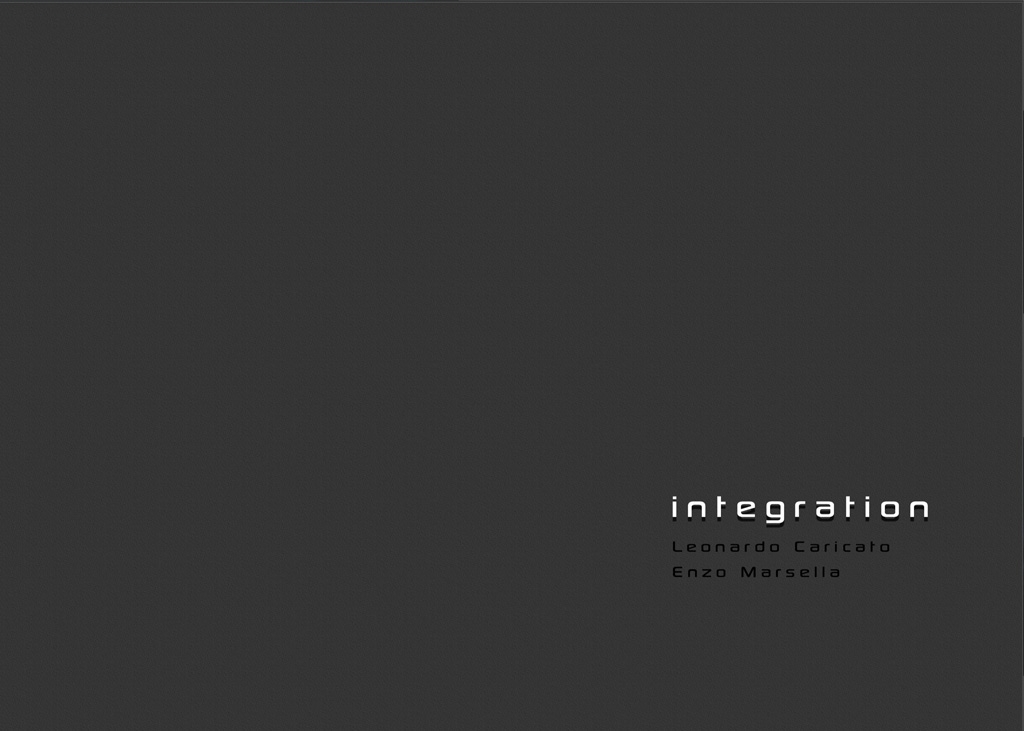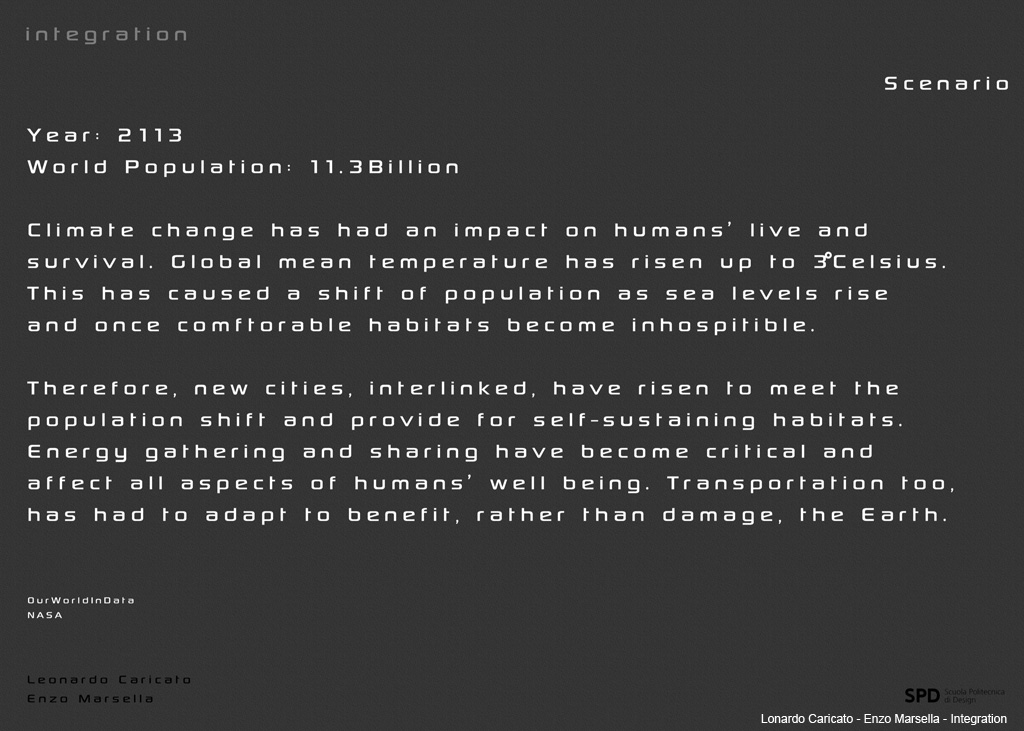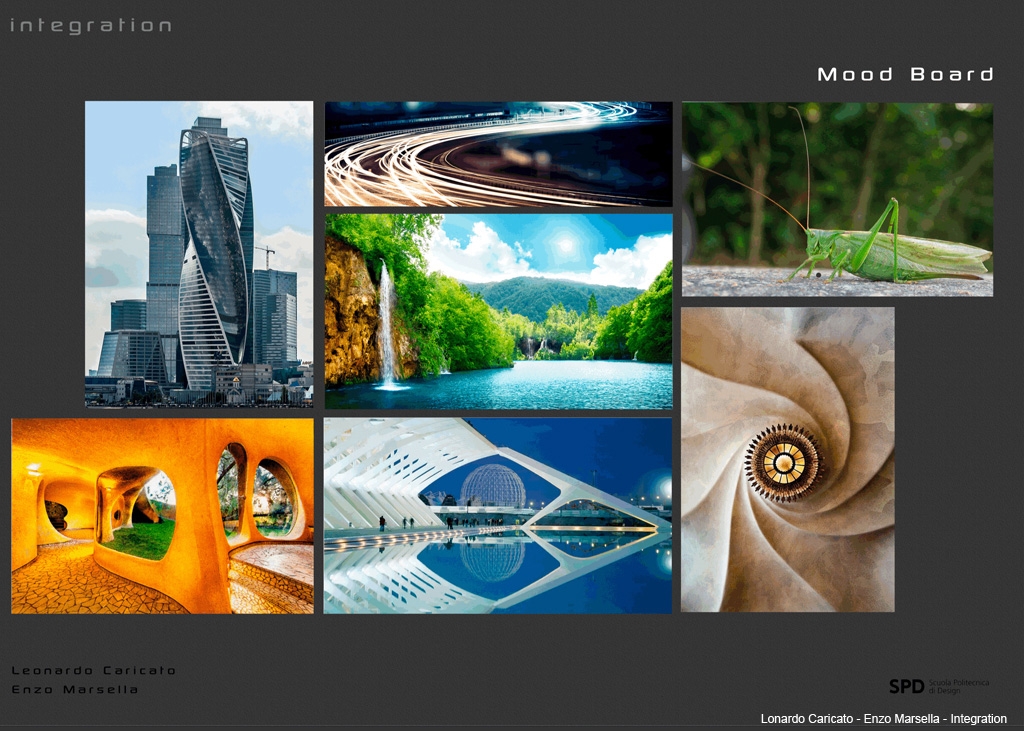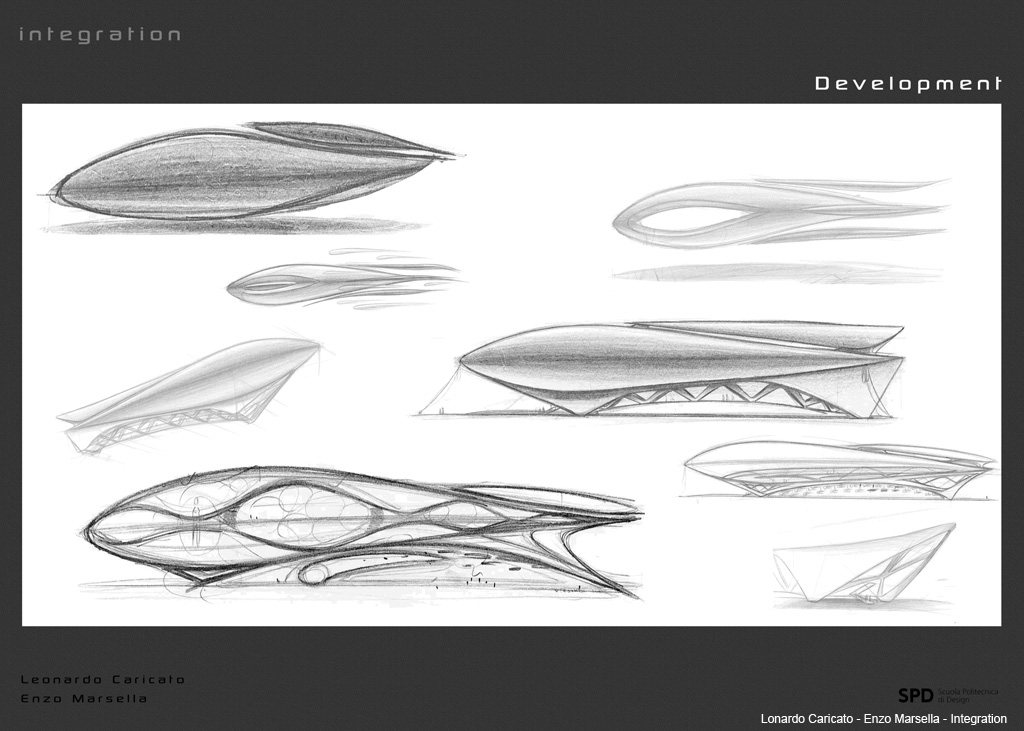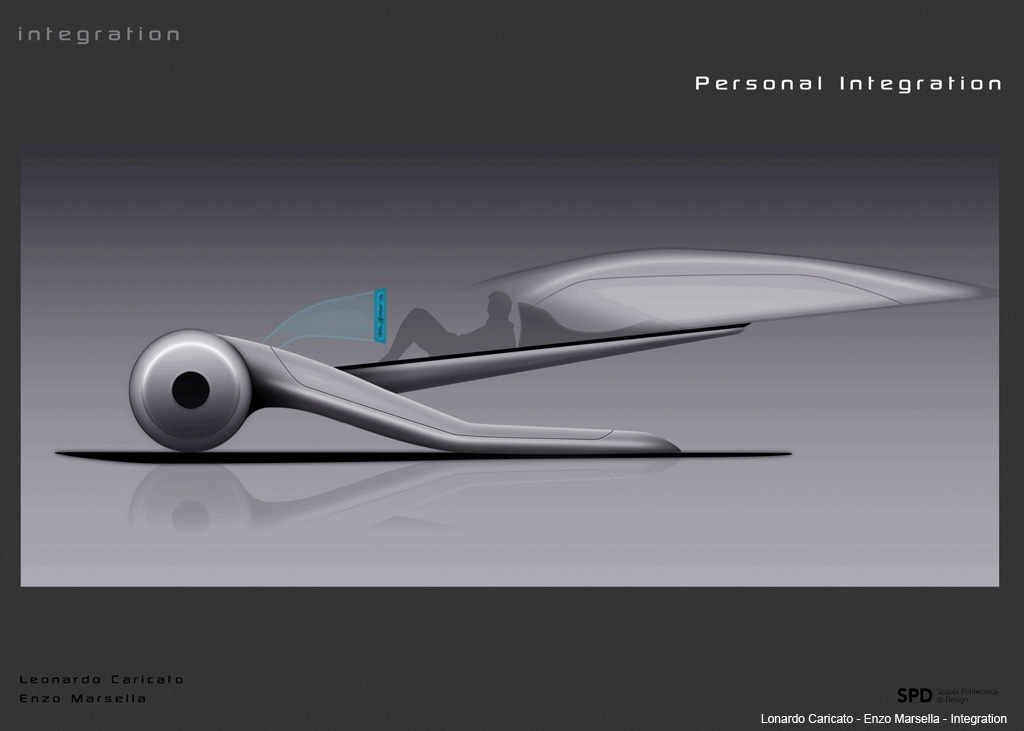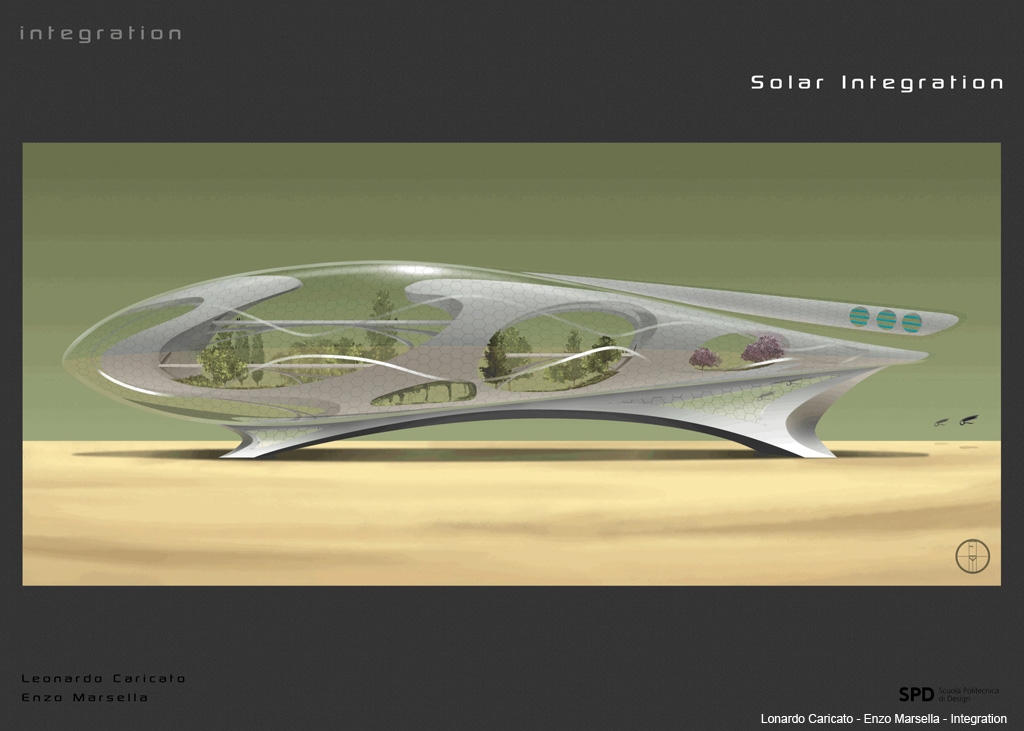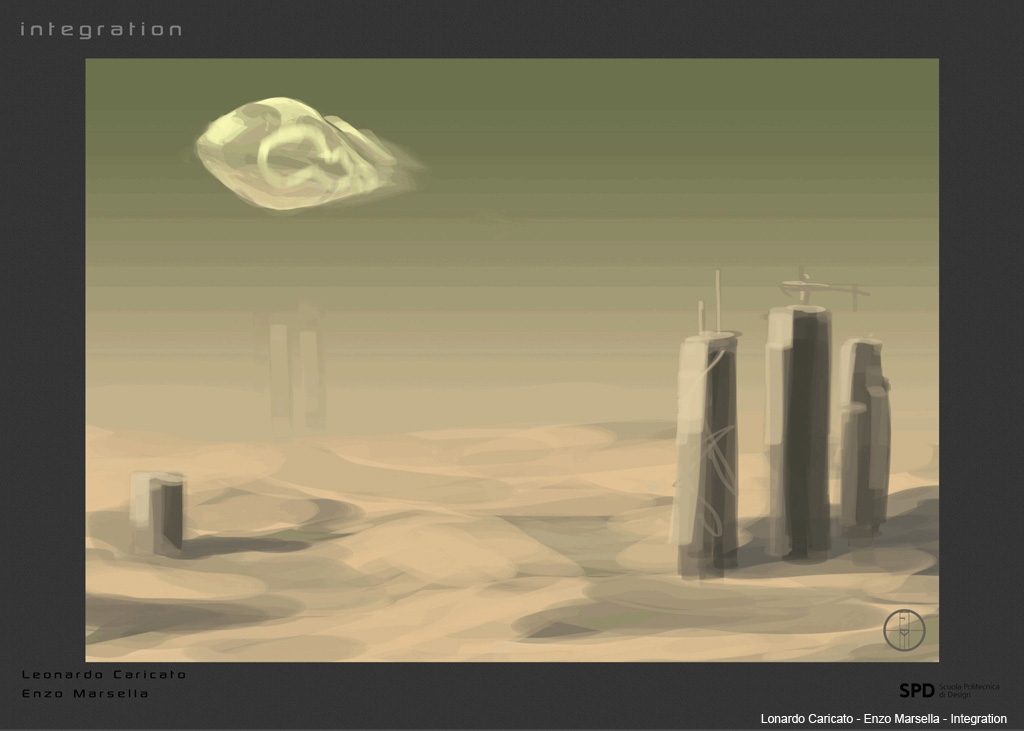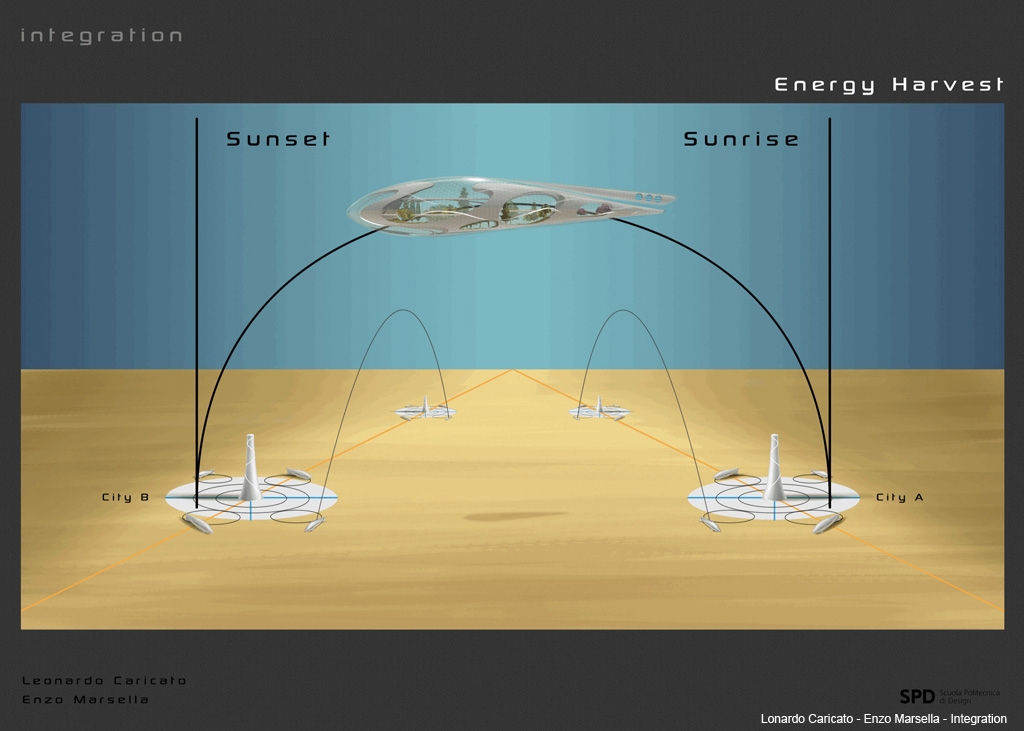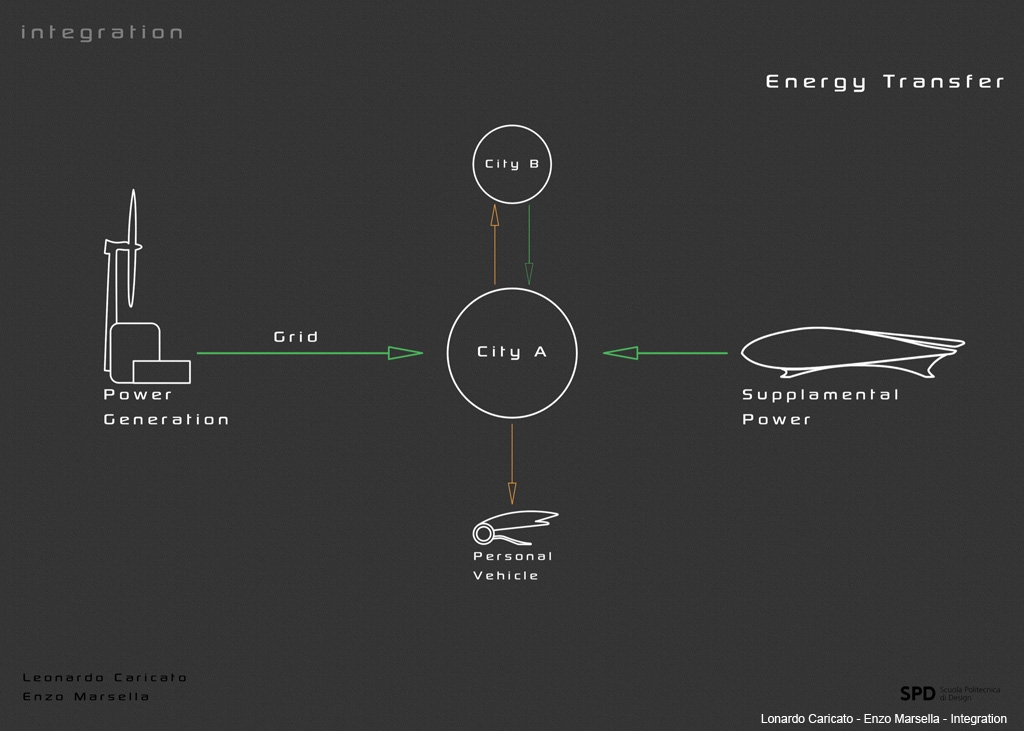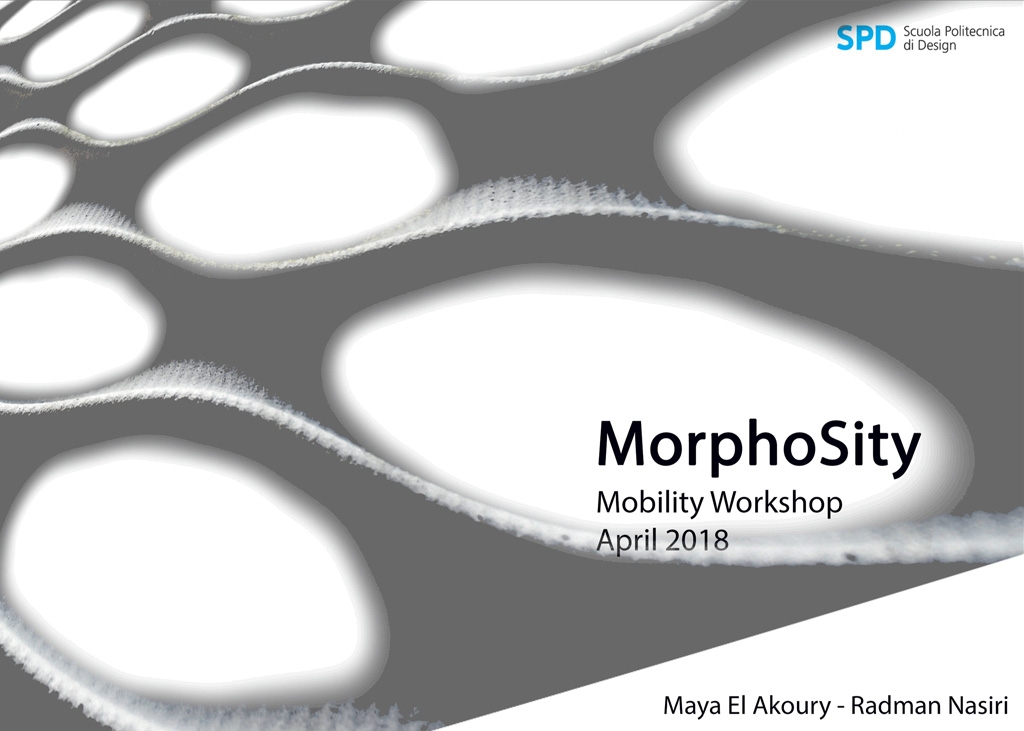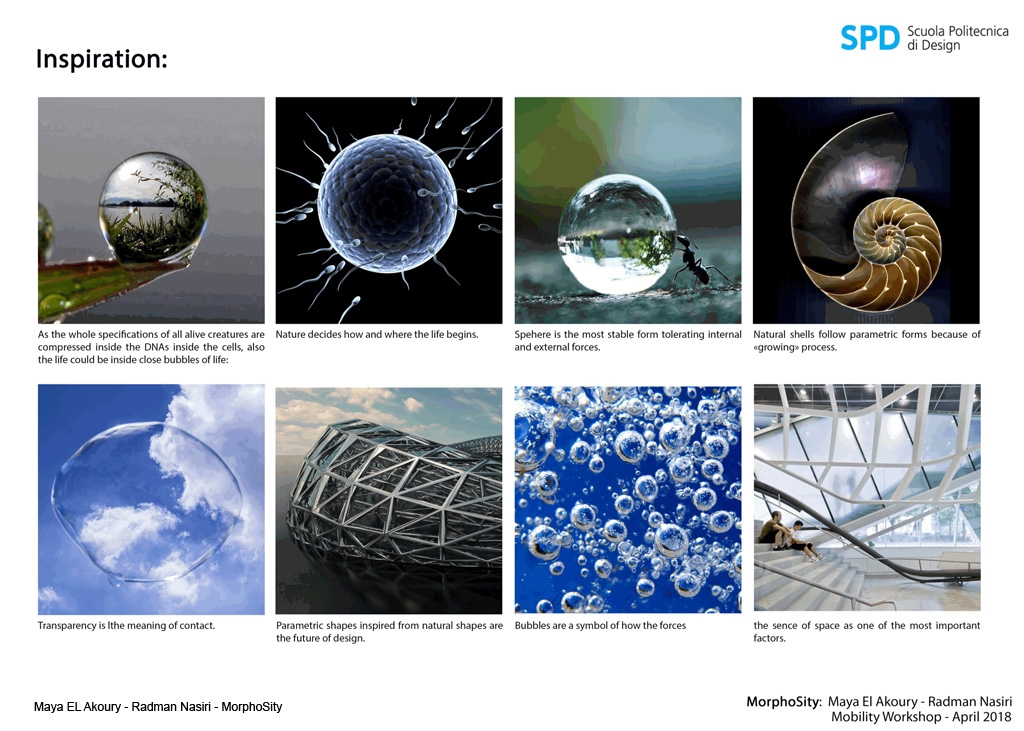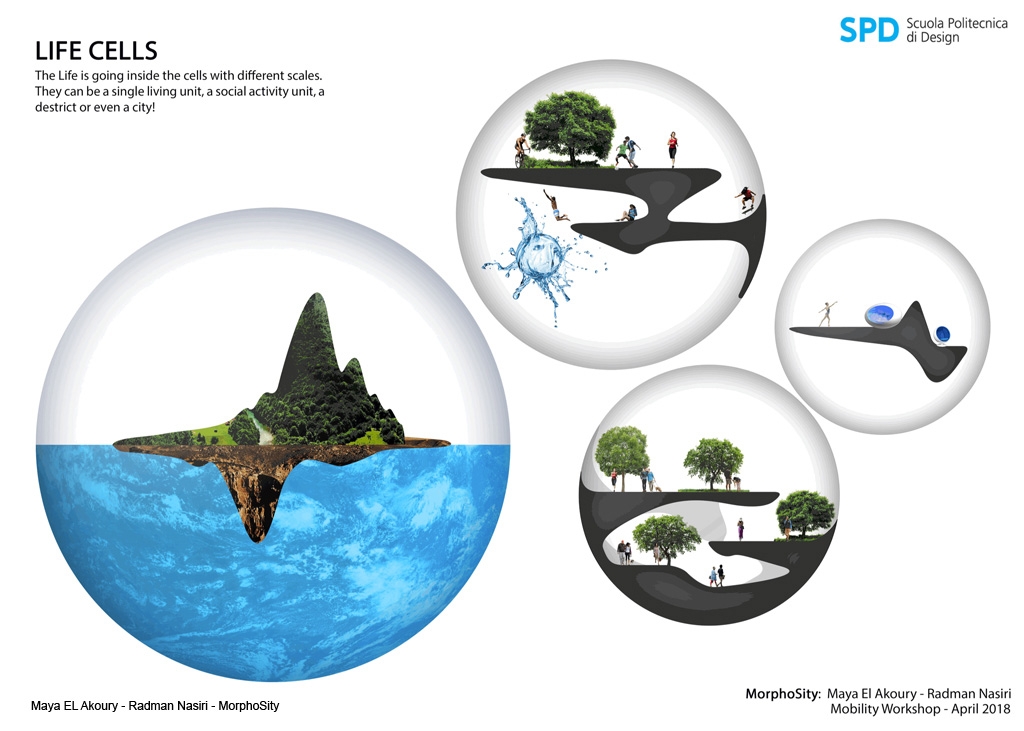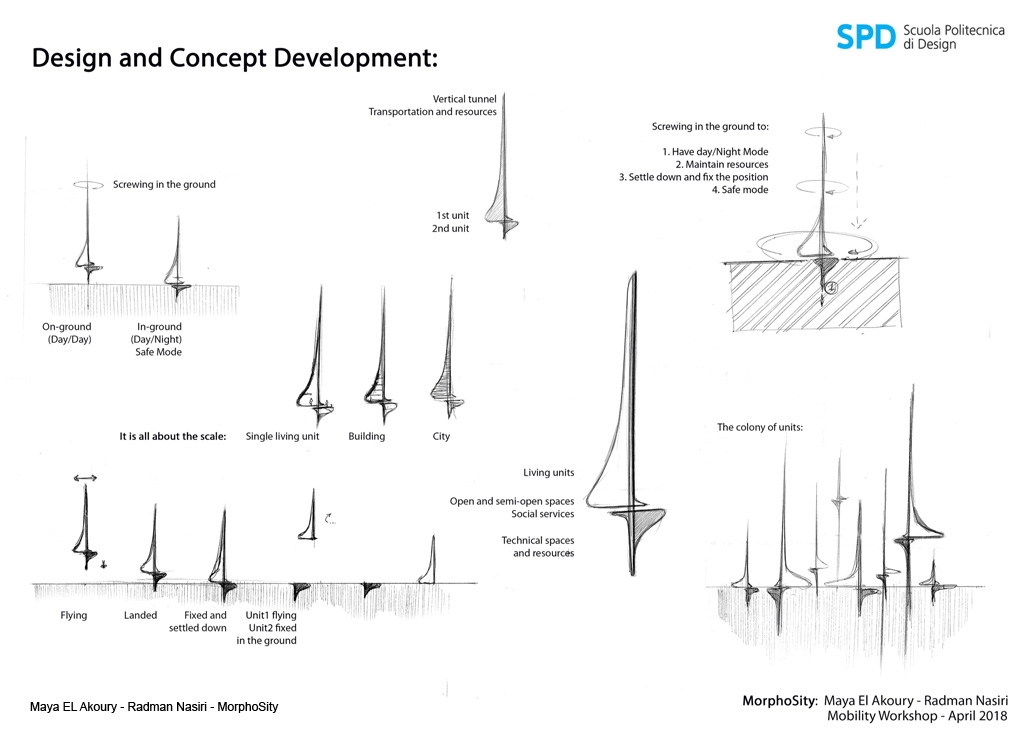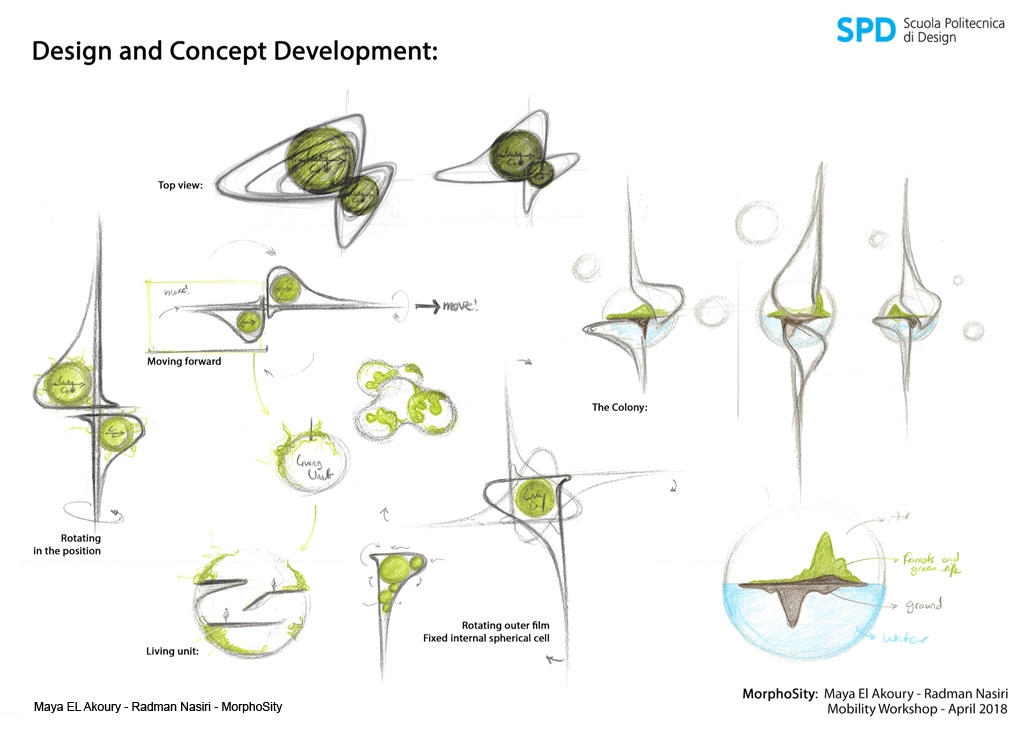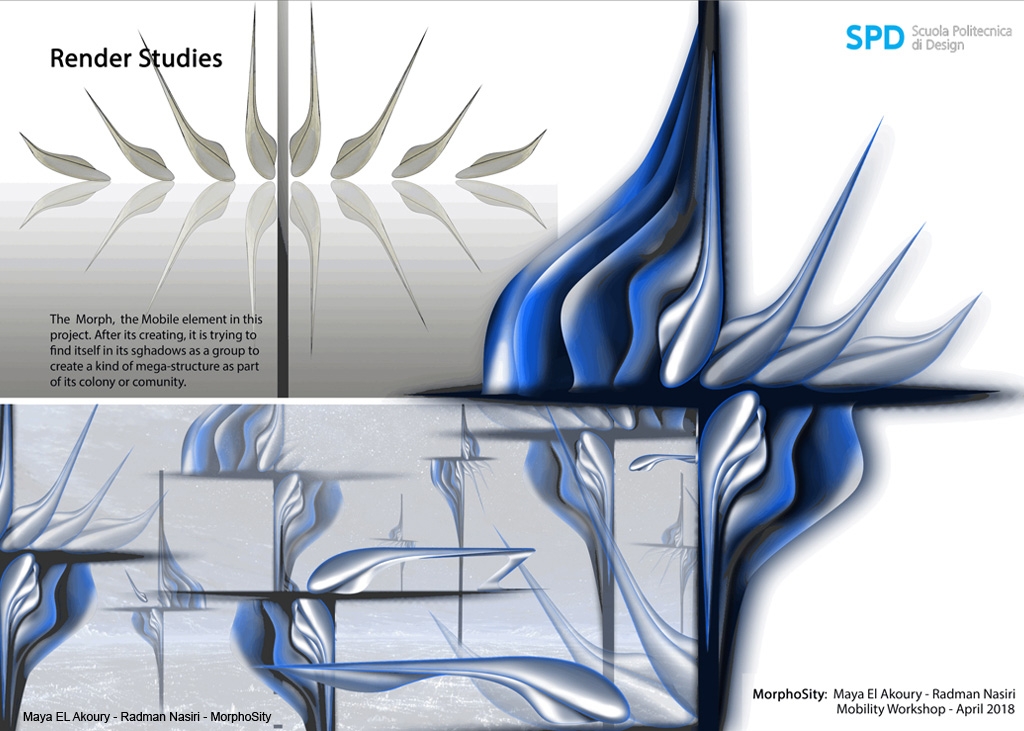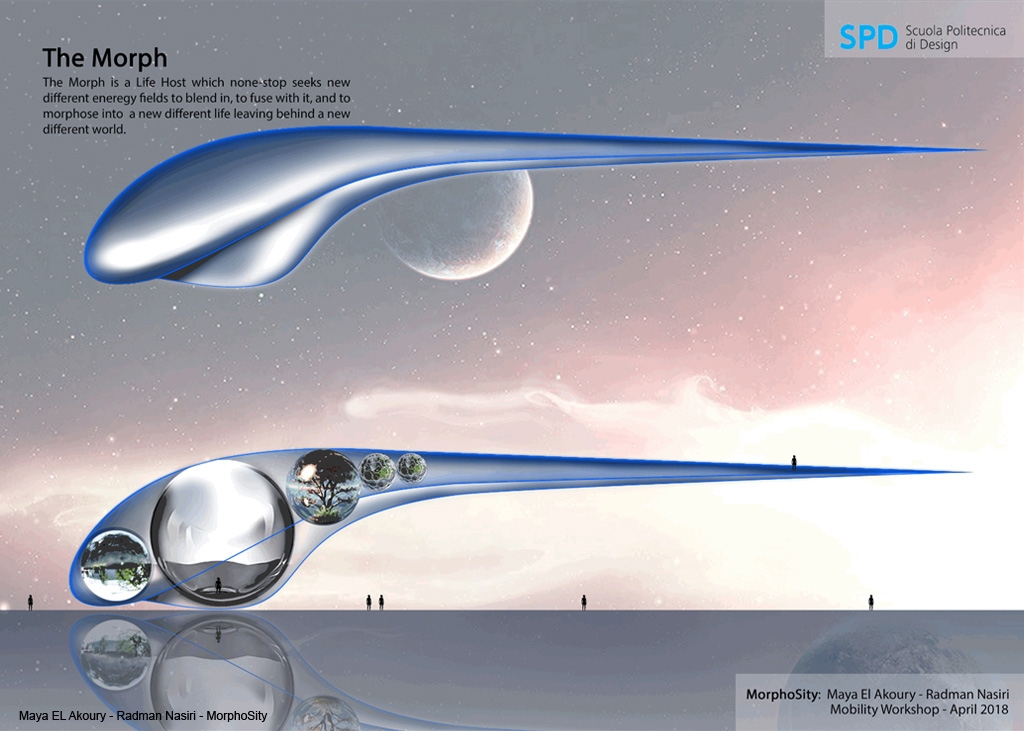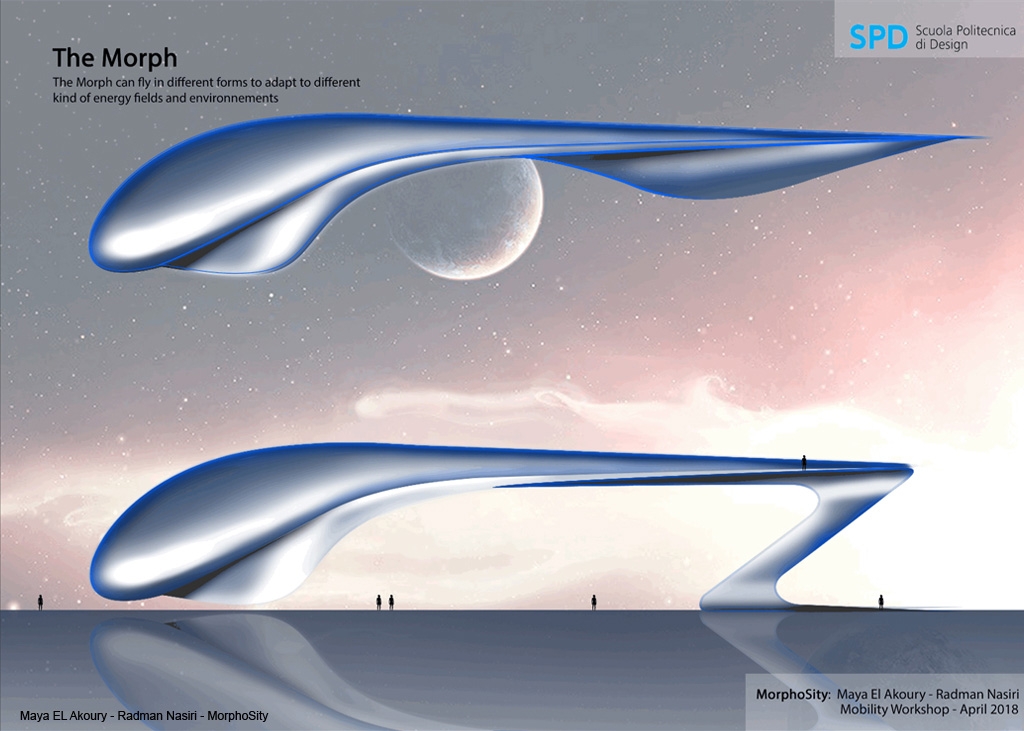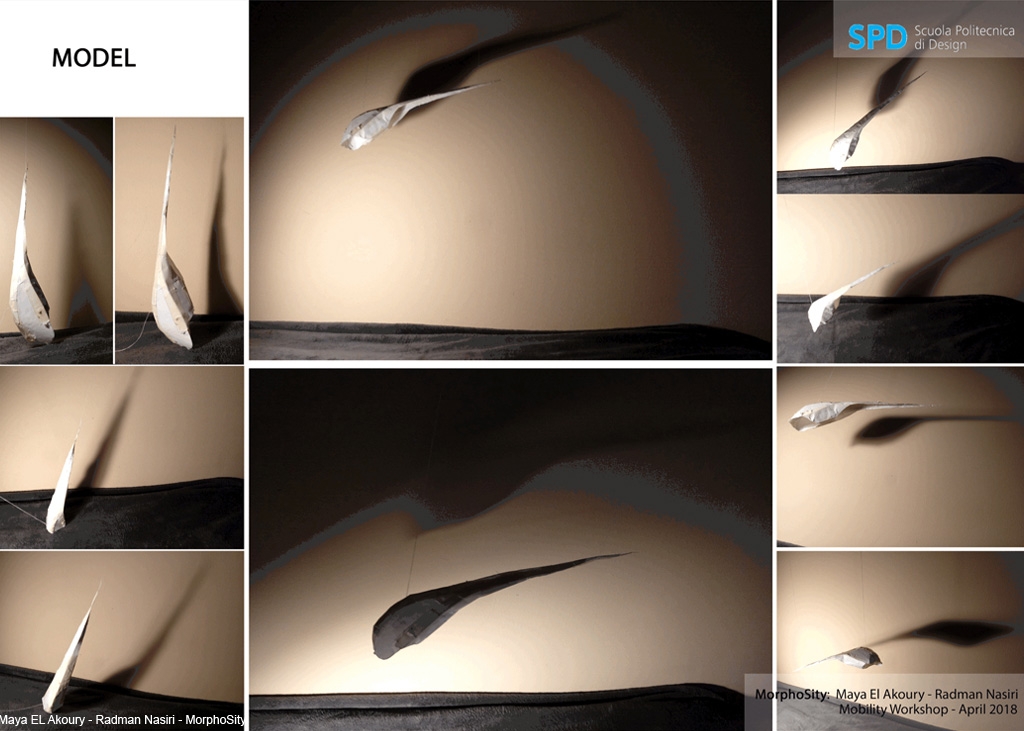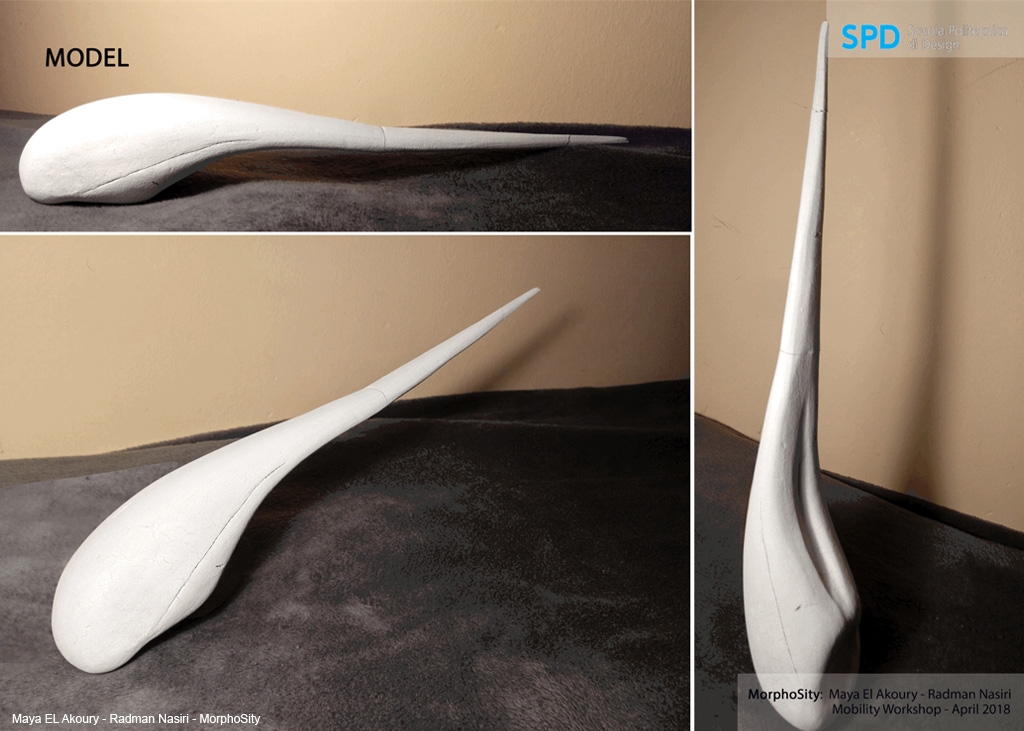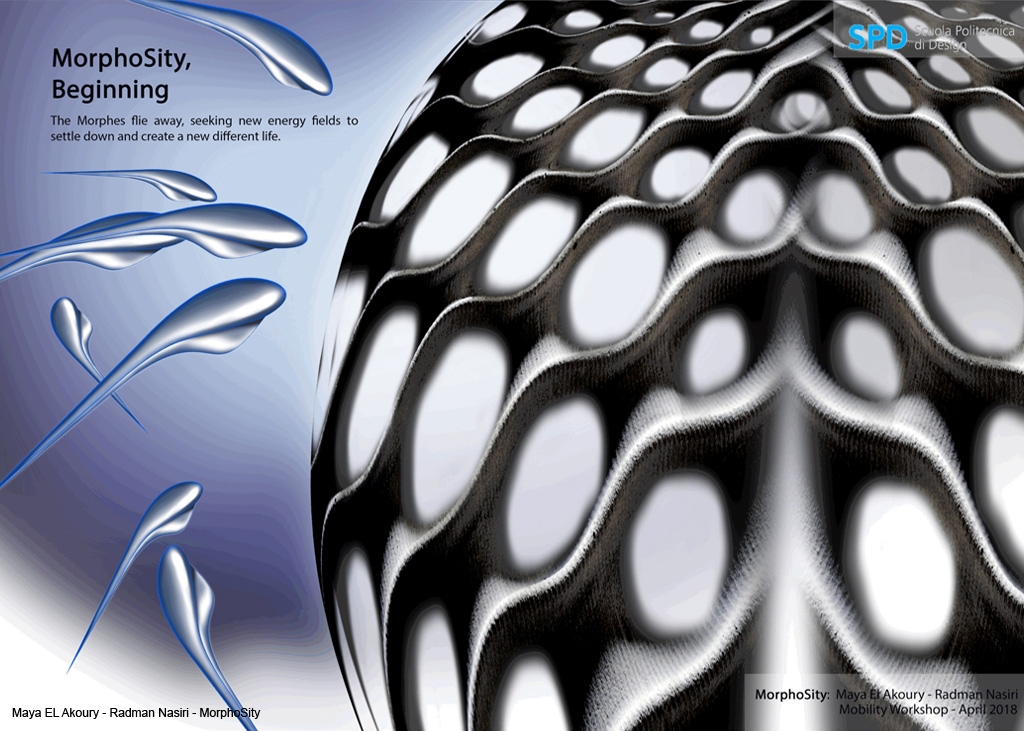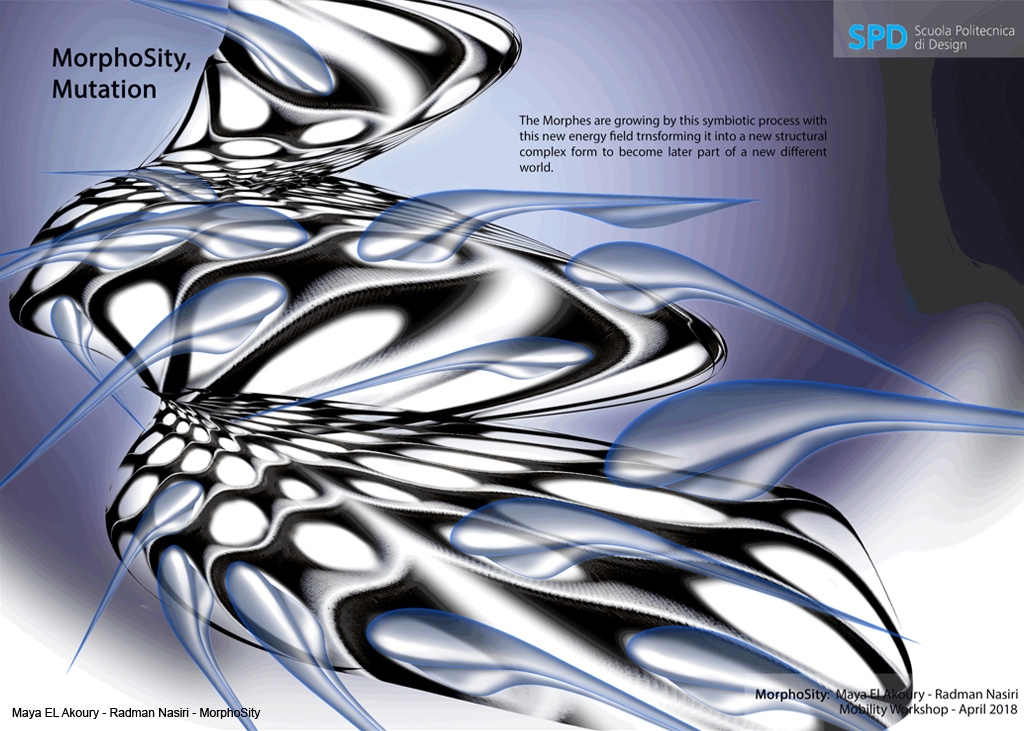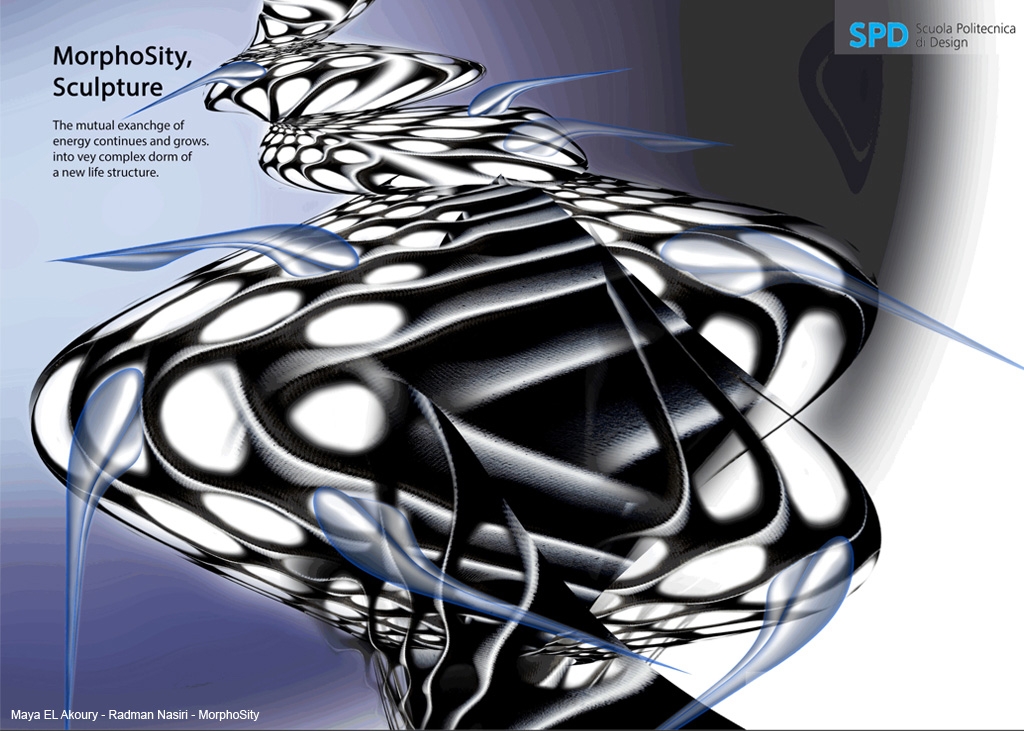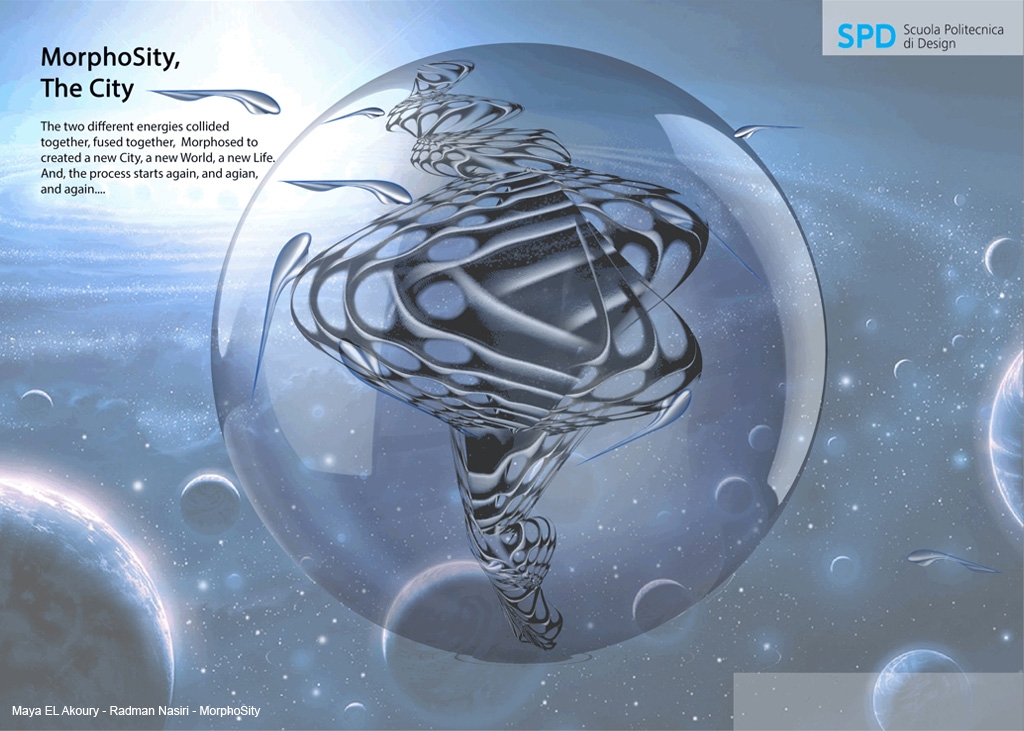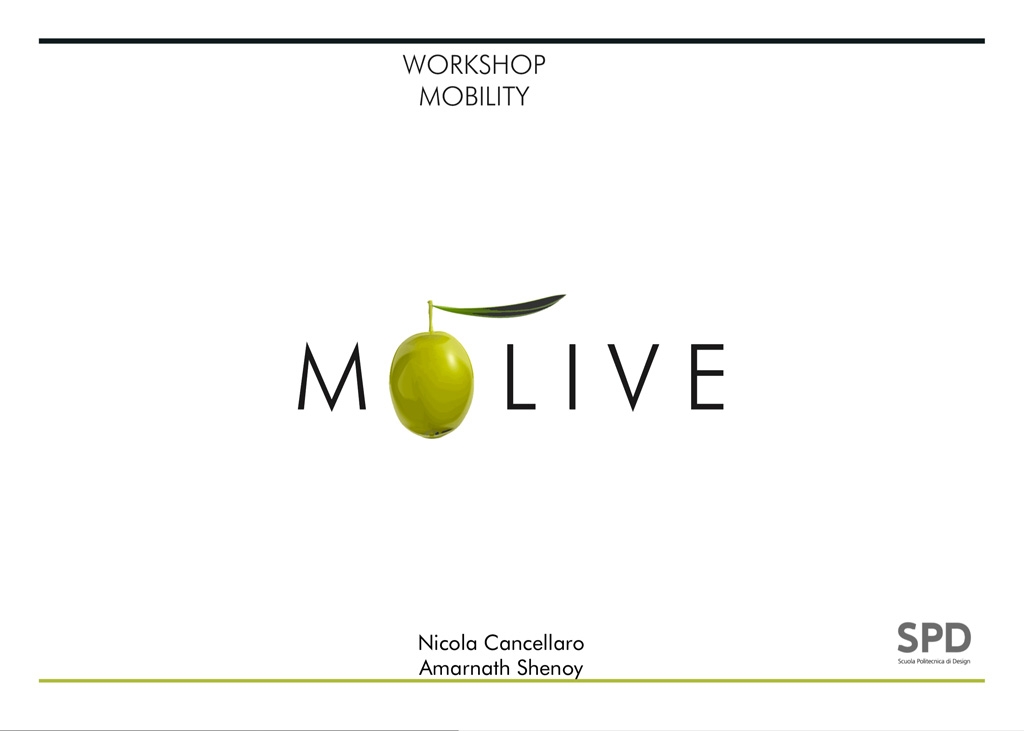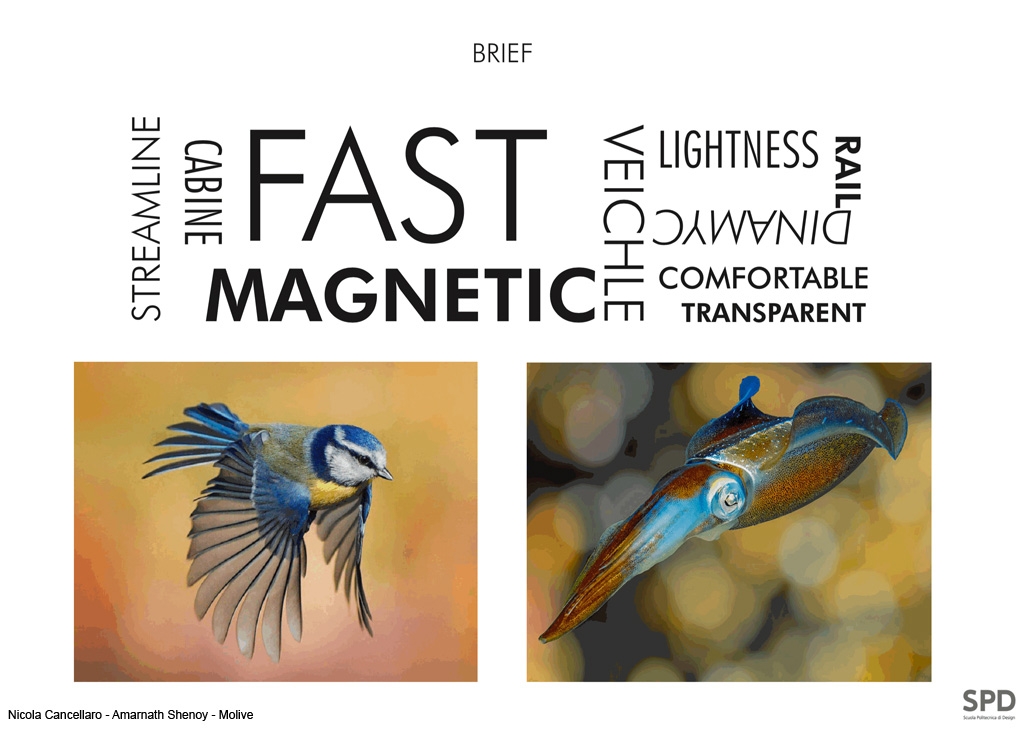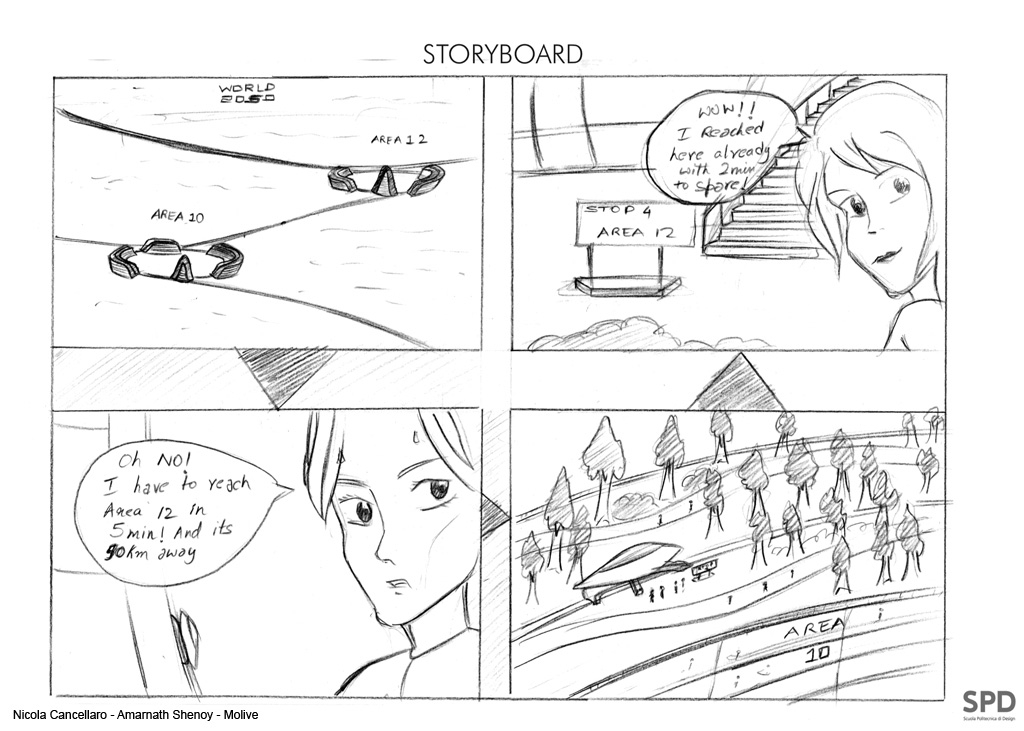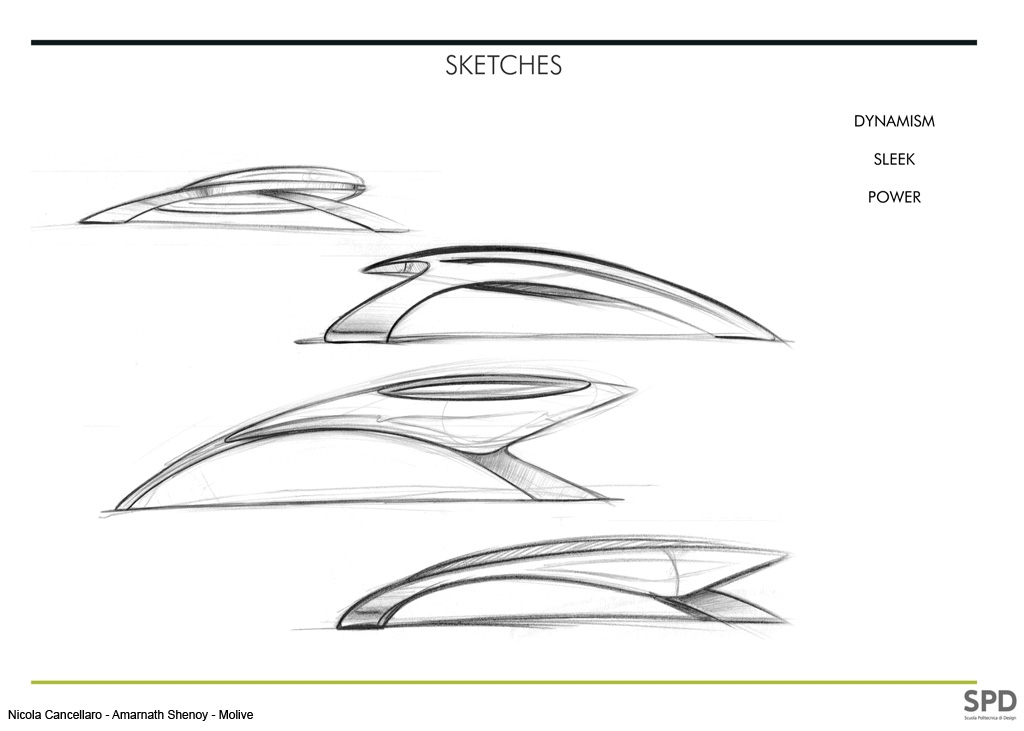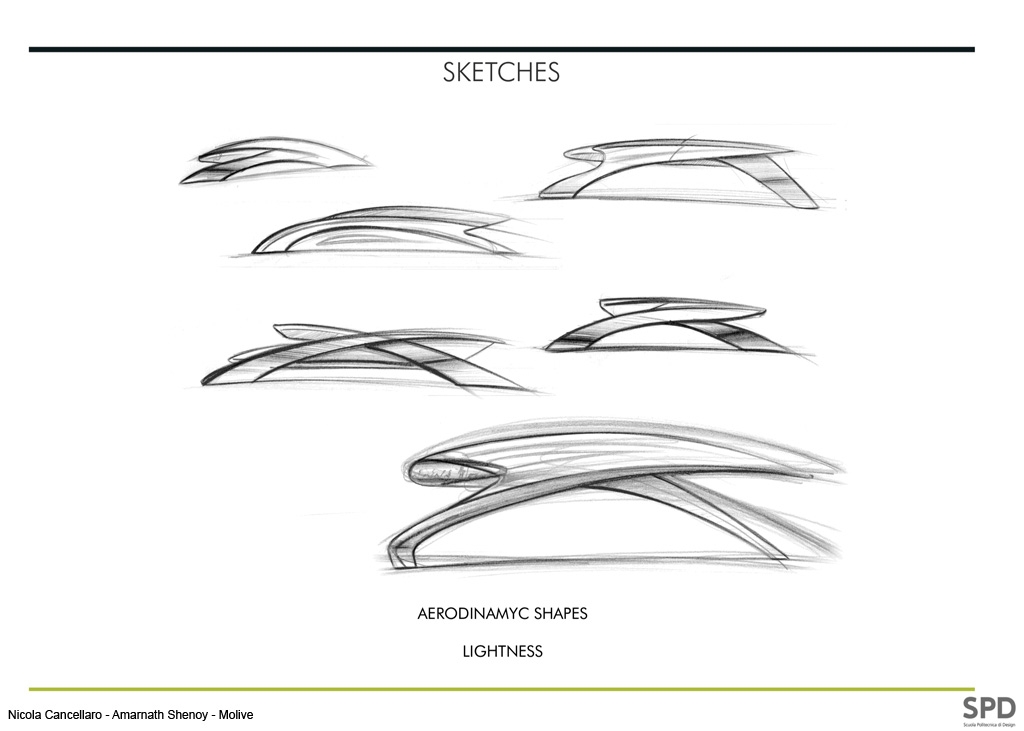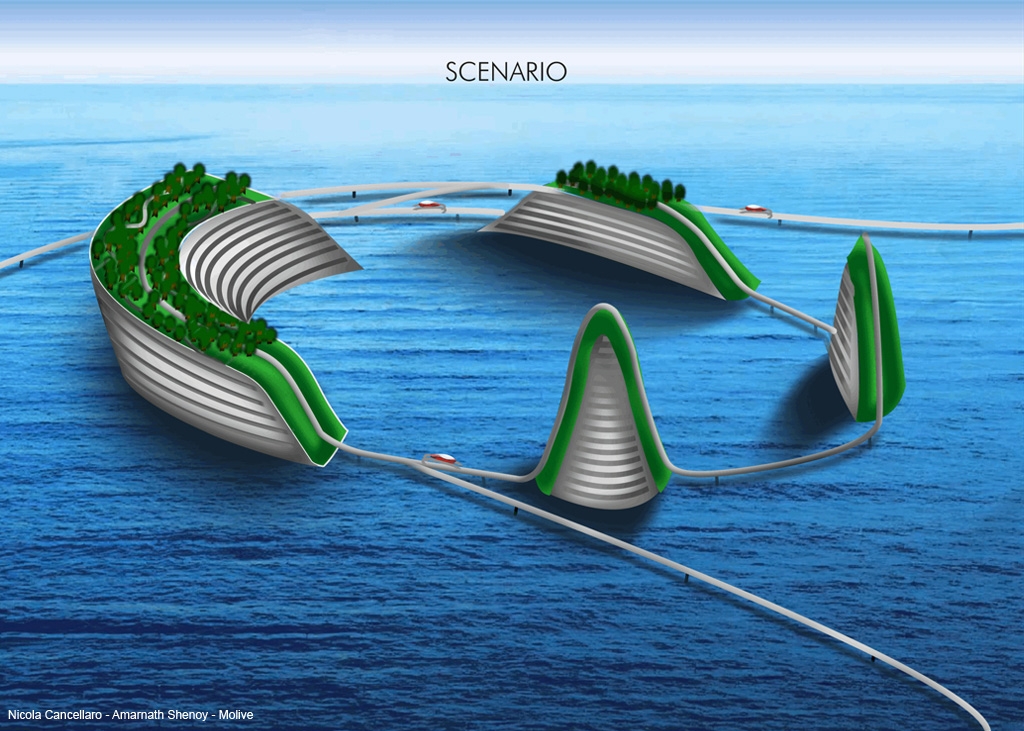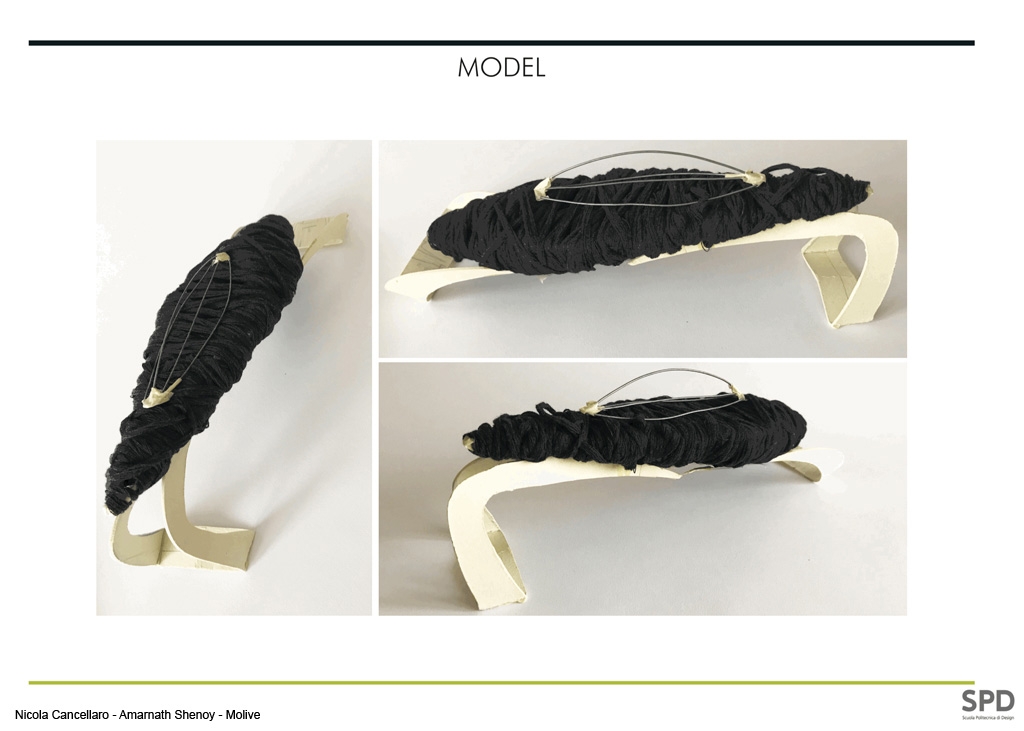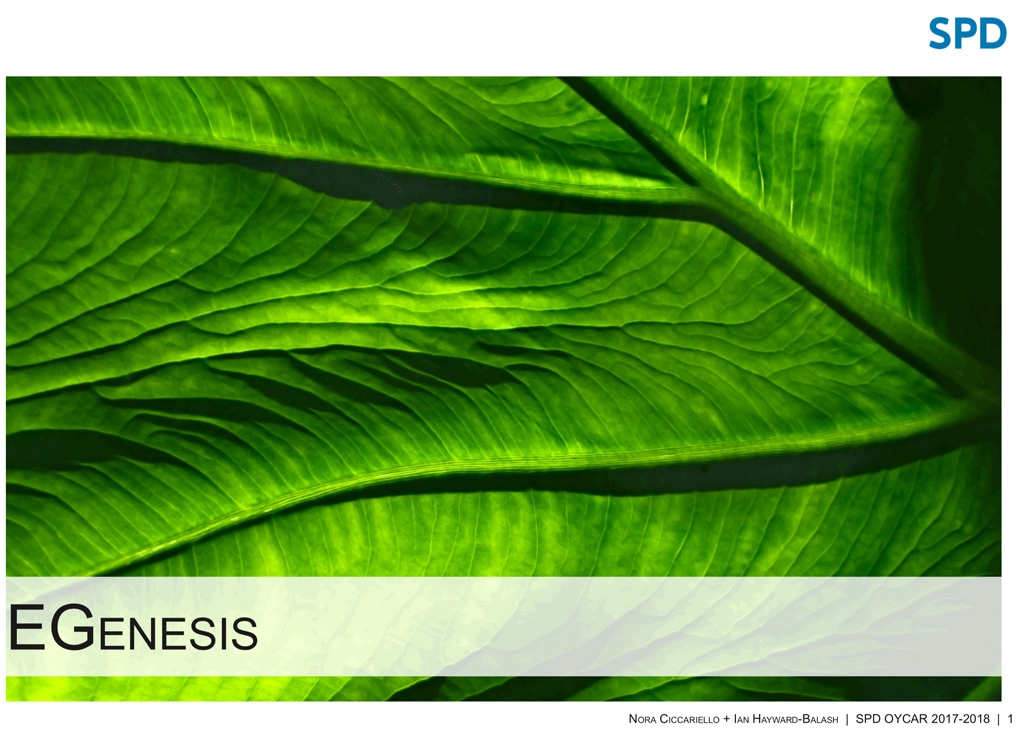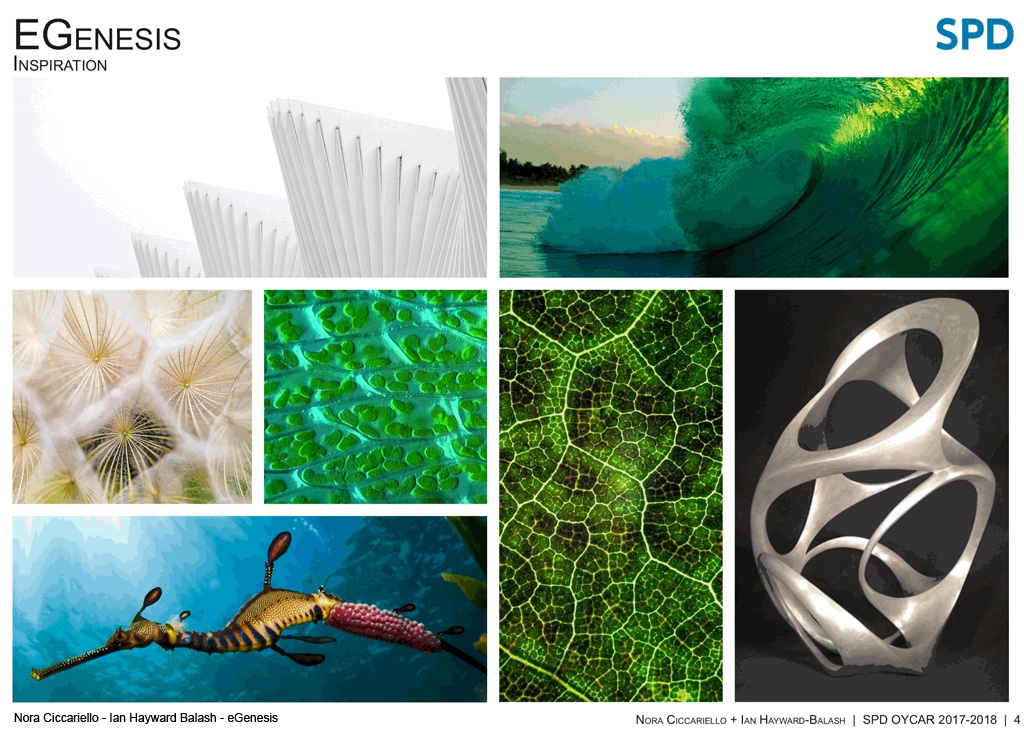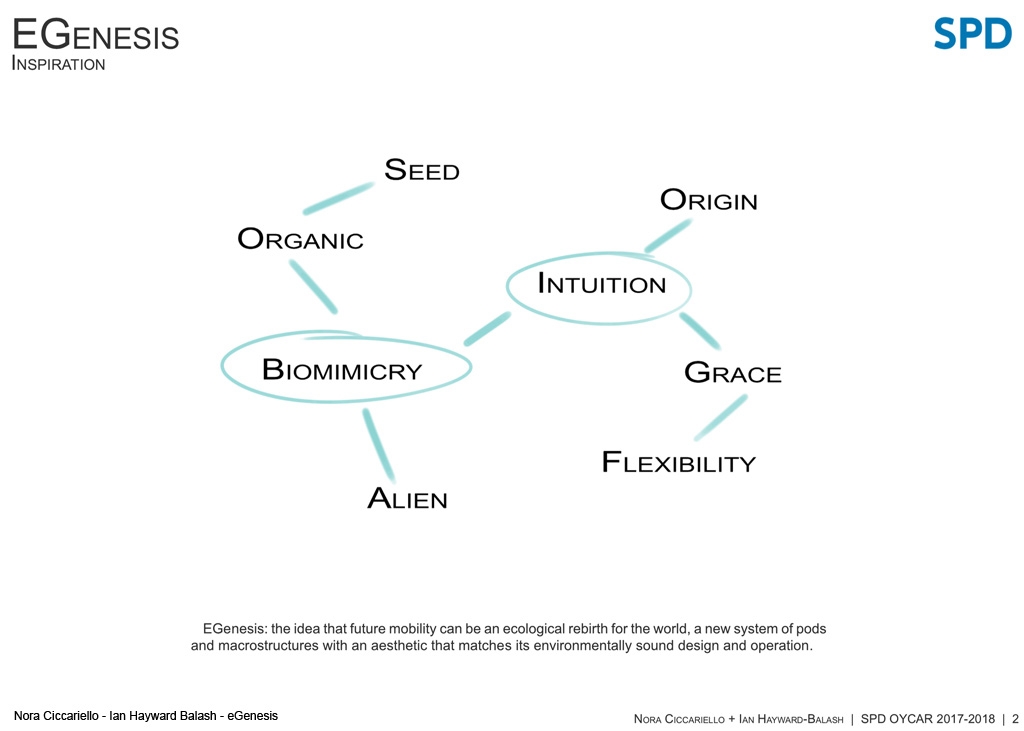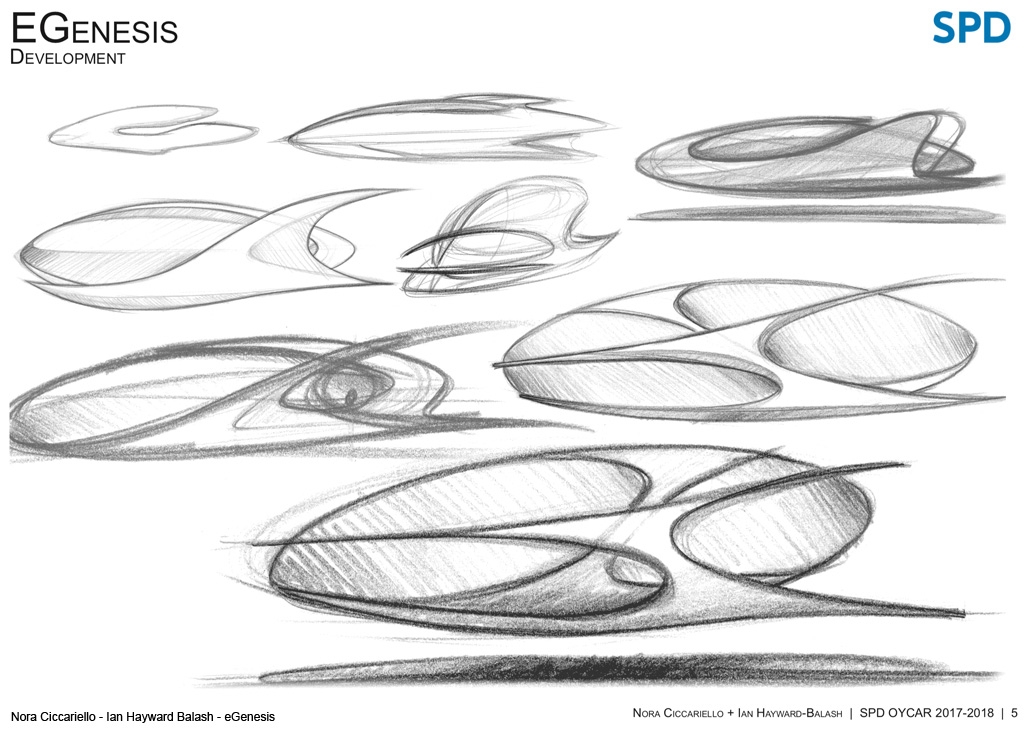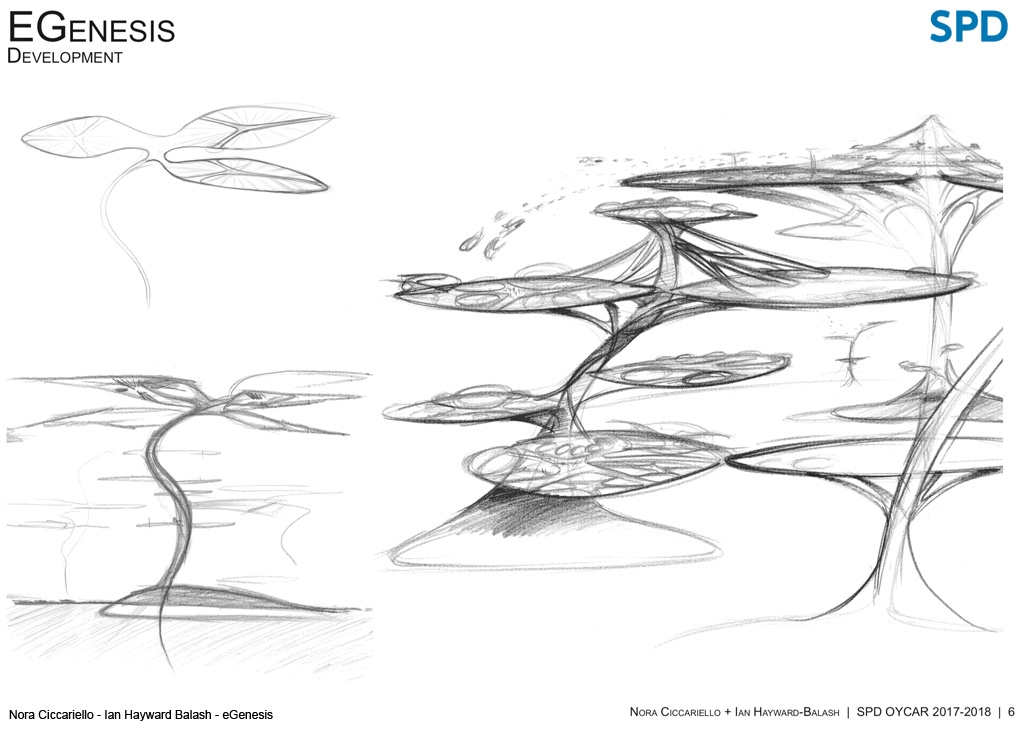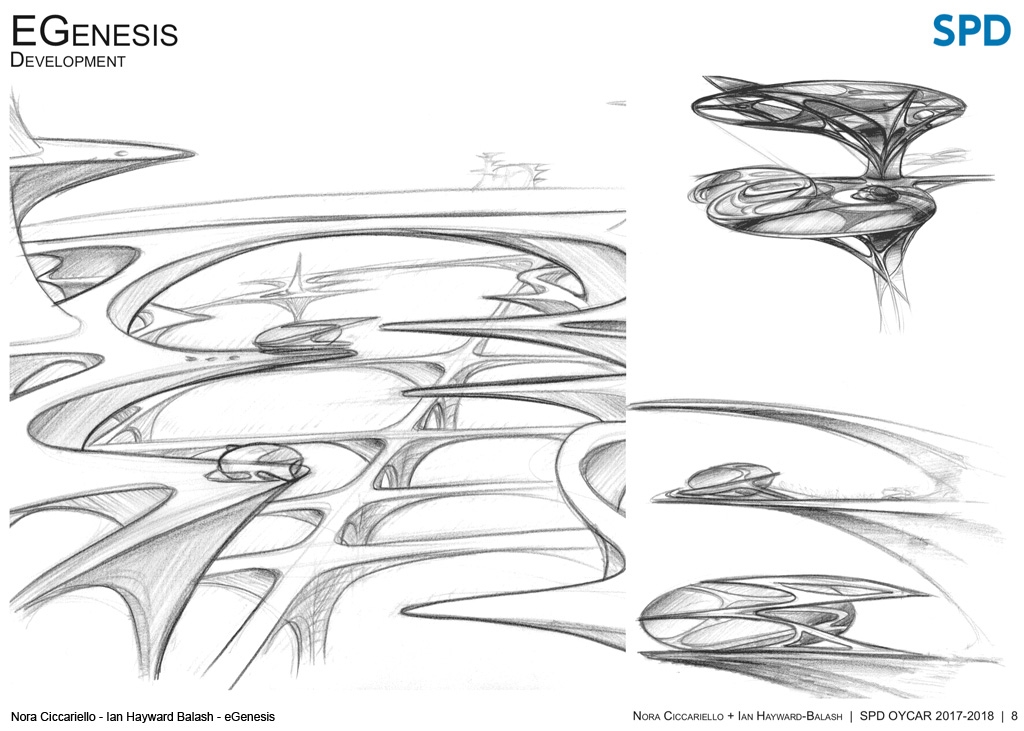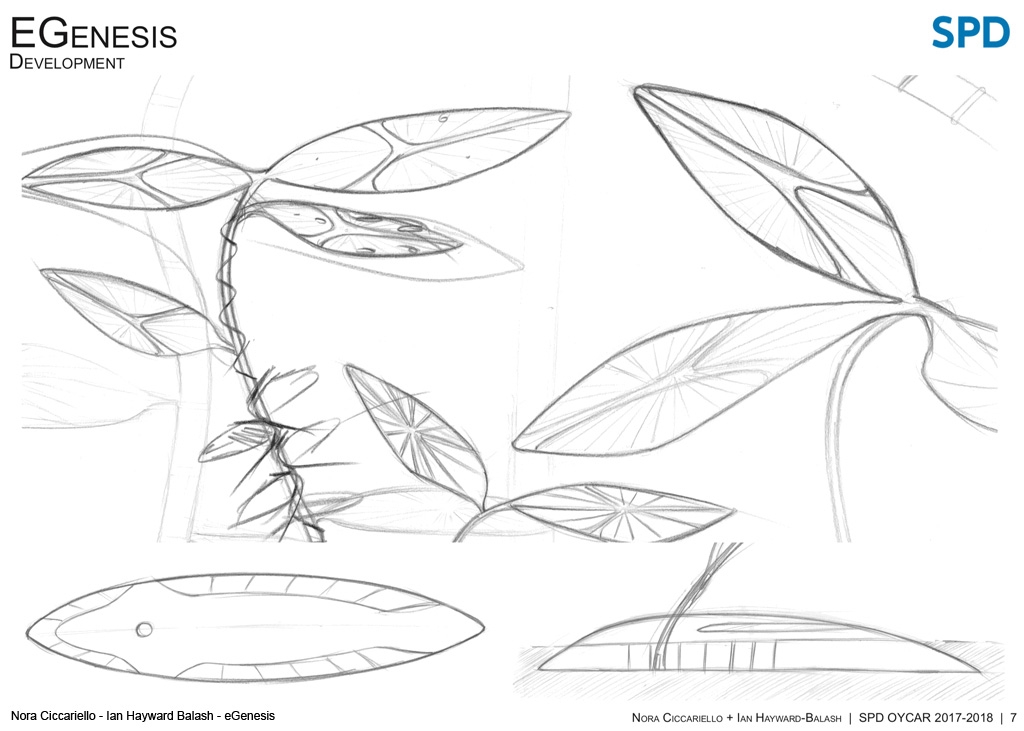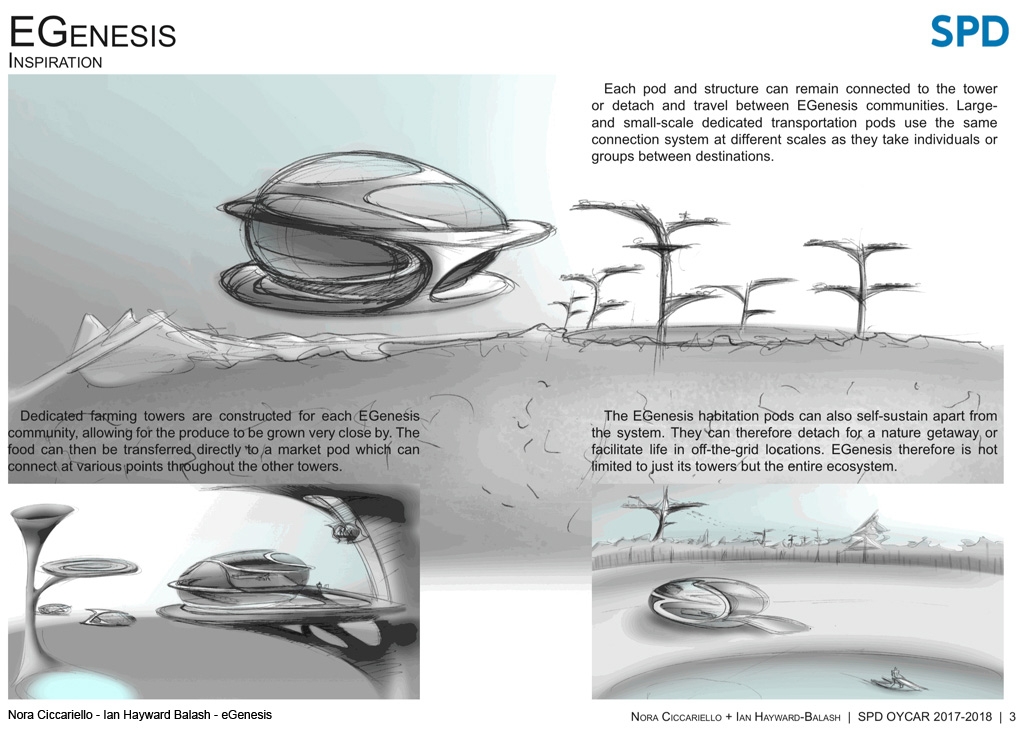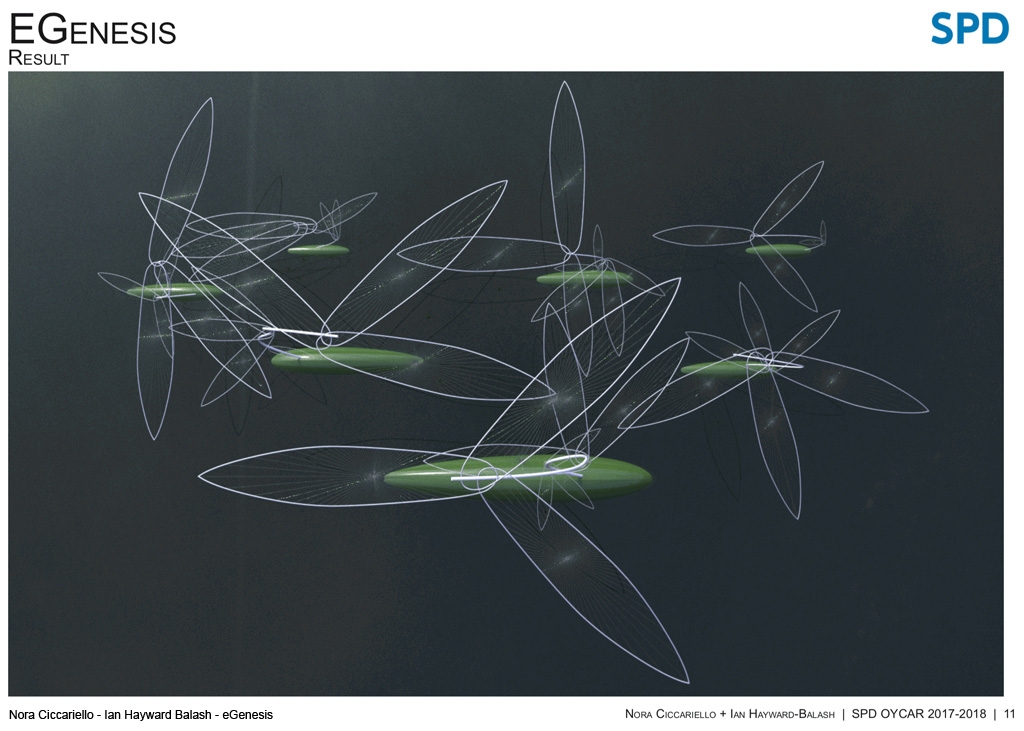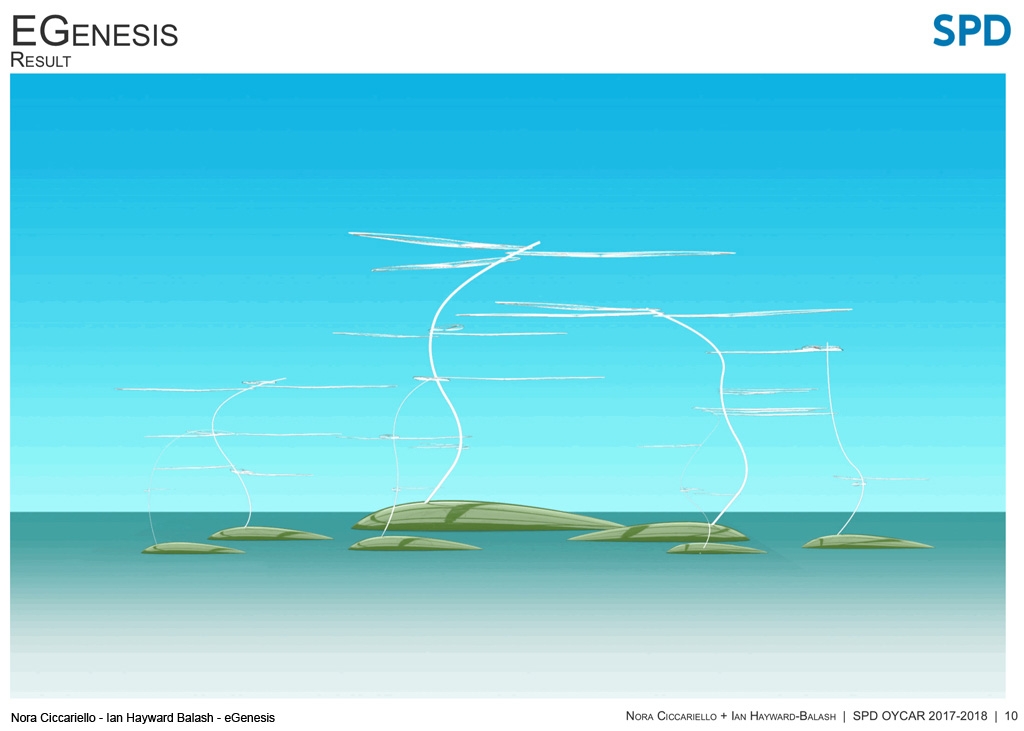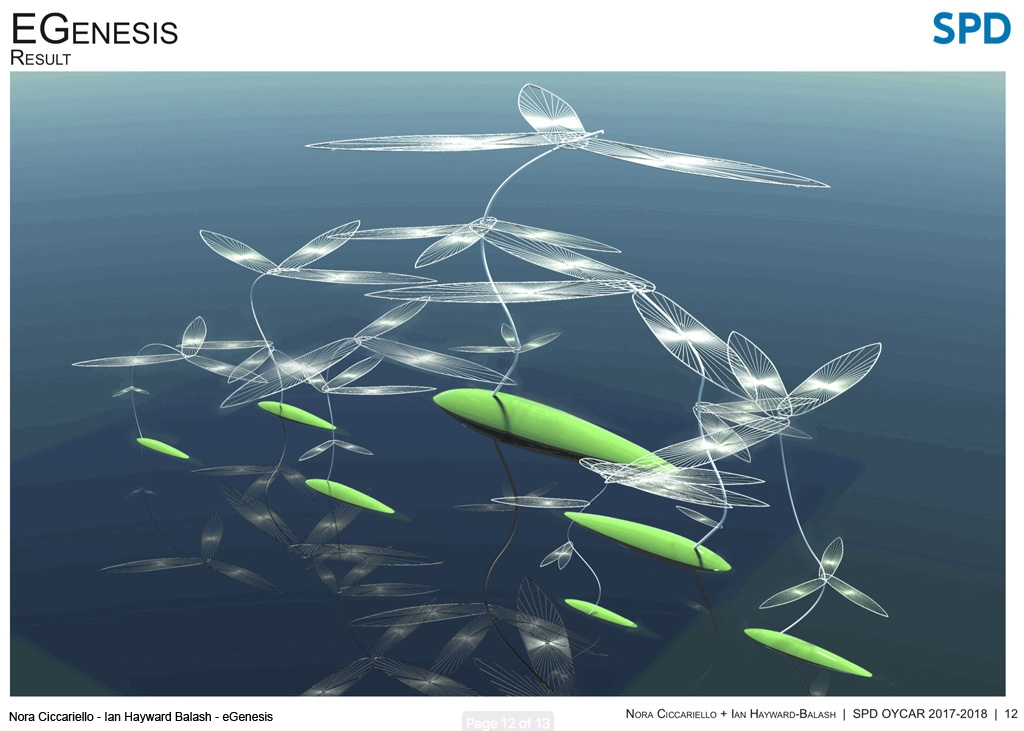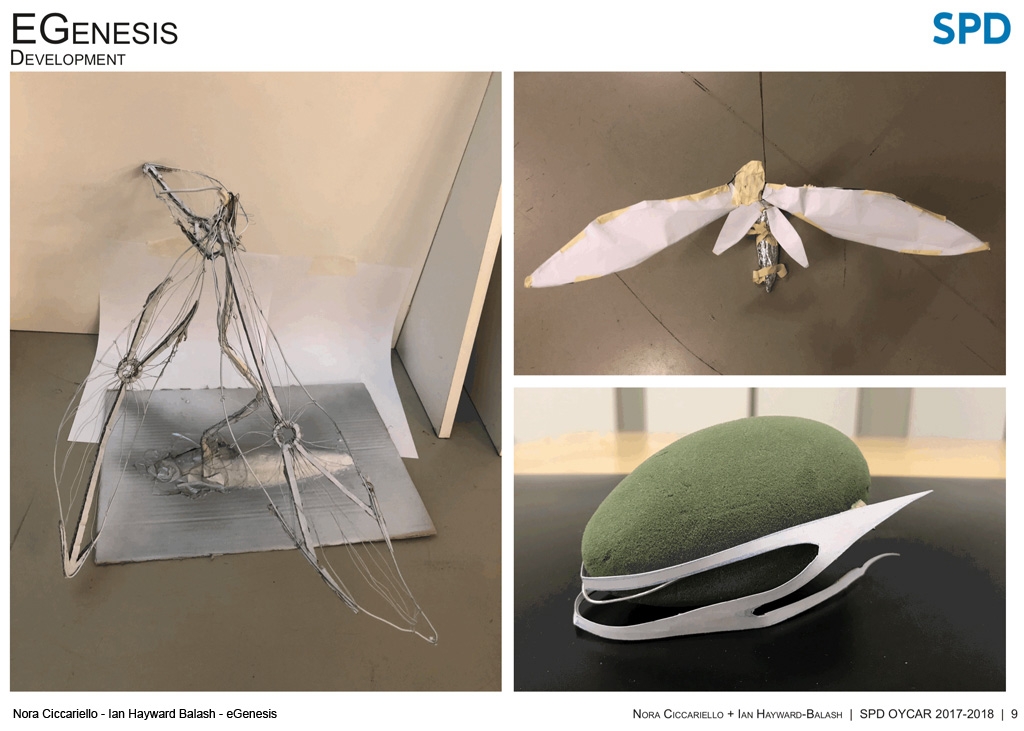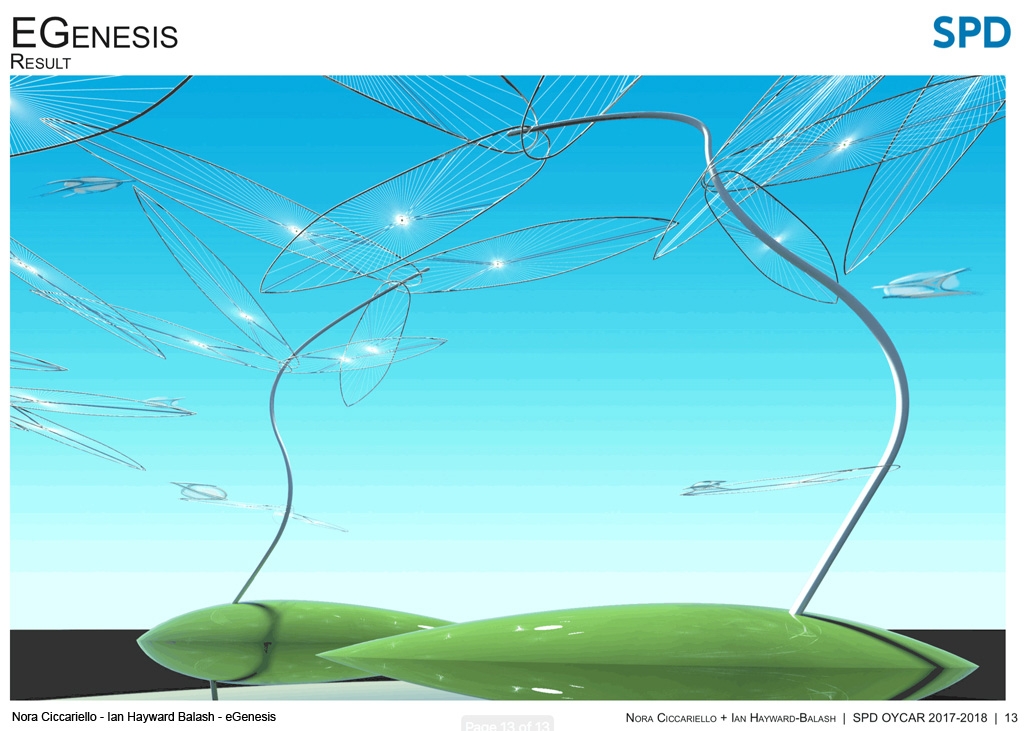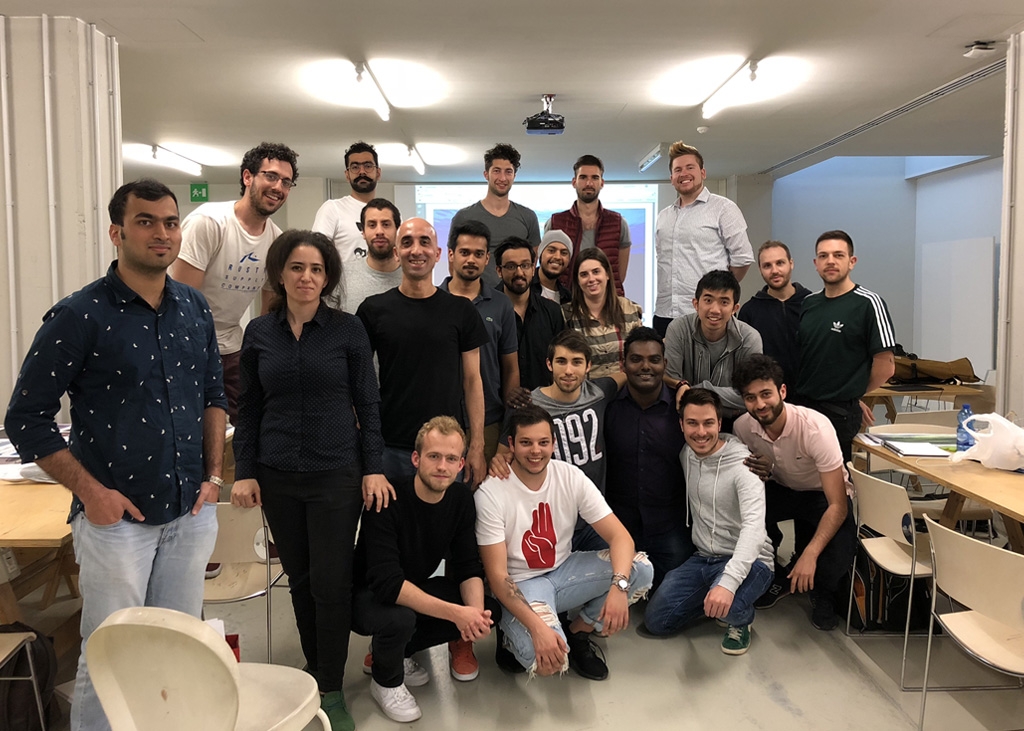WORKSHOP
FUTURE MOBILITY
TRANSCAR
SPD Scuola Politecnica di Design, Milan
Car and Transportation Design Program
16-24 April 2018
CONTENT
LIFE ON THE MOVE
The workshop aims to create an innovative vision and demonstrate its commitment to shaping the future of mobility in an urban context, considering the concept of driving based on the journey rather than the destination. Projects will be prospectively questioning what the technological and socio-cultural progresses are and how these will affect the evolution of the car and its intended use to provide an immersive travel experience. On the other hand, during the studies, proposing design as a method of inquiry and focusing on future transportation systems and programs in regards to the new mobile subculture will be discussed. One of the primary purposes of this workshop is to reflect on the multiple aspects of mobility as well as its symbolic and aesthetic content and open the way towards transdisciplinary studies that increasingly claim their place in the social and cultural dynamics of the contemporary world.
The workshop also investigates how the biotic relations between man and machine and the transformation of user interactions will allow people to reflect their senses, feelings, and patterns to create a more human-like context with the vehicles in the future. Parallel to the future studies, projects will focus on the analysis of contemporary transportation networks as habitats, artificial infrastructures, and organisms and embrace the interrelations and qualities of vehicles concerning their interactions with inhabitants. The process will explore a collaborative expression and synergistic scope together with emotional experiences and sensorial comprehensions to propose a deep reflection on new forms of future mobility, considering the problematics in rather complex ways in terms of transportation and global issues.
The Art of Mobility is a sub-topic that aims to create a space for the students to generate their ideas about how mobility and movement relate to future mobility. Therefore, the preparatory models that students will ask to create intend to feature a right blend of agile and dynamic volumes and capture the essence of nature; furthermore, during the workshop, students will dissolve their artistry into one another at close range while exploring abstract landscapes and forms to excite.
Students will be responsible for documenting and presenting the design process in the final proposal and facilitating different communication tools and methods where necessary.
ABSTRACT
The next decade represents a pivotal time for the car industry, with new technologies and sustainability concerns likely to exert a significant influence on future mobility forms. On today's evidence, the concept of mobility has entered the agenda of numerous international institutions and organizations in certain global research projects, above all in its implications for the cultural, artistic, and social domains. Artistic practices and creativity are directly and closely linked to mobility; a great part of art and architecture have existed for the urge to travel, to discover, and to go beyond the limits. As a value and conscious process of knowledge, mobility does not refer to a simple trip or displacement.
Mobility presents multiple facets; it is directly related to the issues of diversity, exchange, experience, and intercultural dialogue. This workshop aims to analyze the concept of mobility in the processes of transformation of knowledge and culture; above all, think about mobility today in a contemporary context. Meanwhile, the primary purpose of this workshop is to reflect on the multiple aspects of the symbolic and aesthetic content of mobility and open the way towards transdisciplinary studies.
In the past, the concept of mobility was decidedly different from what we see today; however, the need and desire to innovate through design still remain the same. Future-watching is important to designers of tomorrow by observing life needs, mobility patterns, and technologies to become a part of this change. Therefore, this workshop aspires to culminate in a thought-provoking presentation while considering all these future aspects and what people will need and expect from their vehicles, both emotionally and functionally.
This workshop intends to propose a concept that can act as a mobility solution, an immersive and interactive experience of travel, as well as a form of ''living''. During the process, concepts will be considered in accordance with functional as well as aesthetic criteria, incorporating technological innovation, quality of execution, clarity of structure, environmental concerns, and simplicity.
TRANSFORMATION
What if home as an architectural space merged into a car to incorporate mobile and immobile elements? New technologies and needs are redefining the car architecture and transforming cars into the digital era in terms of better human-to-machine interfaces for new mobility experiences. This workshop is intended to discover new car paradigms to achieve what additional functions cars might have to promote wellbeing for their users in the future. Therefore, this workshop describes an innovative vision for the interaction between man and machine to transform cars into architectural units to allow people to better reflect their senses and feelings in their comfort zone. The experimental diagnostics of the workshop intend to reflect future life configurations and patterns to create a better connection between mobility and architecture to attach people more to the car both physically and psychologically in the context of space.
In the experimental process of livability with the transition from still to motion, during the workshop, the car will be assessed as a spatial unit in conjunction with senses and perceptions to create more human-like (anthropoid and humanoid) relations with machines. Furthermore, this workshop focuses on the gap between the context of destination and journey and constitutes a shift for the future car paradigm by transforming the concept of driving into supervising. Placing the focus on new typological, technological, symbolical, and socio-cultural parameters, the workshop is constructed on the evolution of cars in a spatial context and its intended use to promote an immersive experience. The result of this workshop is introduced by a car that could also be used after the journey as a conclusive architectural statement following its extensively modified context.
Apart from the idea of existing car typologies designed with a built-in mindset, the formula will be to blend car and functionality into maximum customization, better adaptation, and improved integration between man and machine by considering cars not only as mechanical but also as sensuous and semiotic architypes. Studies will be assessed in the context of open platforms based on variable, modular, transformable, transmorphable, programmable, flexible, and adaptable design aspects to transform the car around the user’s needs per pro and accessibility to spend more time with things that matter. Furthermore, a step change in material construction will be consequential for the final result, blurring the boundary between car interior and exterior as well as virtual and physical spaces to create natural and intuitive experiences for users.
During the workshop, intending new types of car architecture through new design methodologies such as modularity, adjustability, and flexibility, together with self-transformation, self-healing, self-programming, and self-shaping material constitutions, will be evaluated to adapt the car’s morphology to various needs of users, still or in motion. For the final result, together with new morphological norms, pro-activating the "life on the move" concept will demonstrate how future car contexts will be better transforming everyday lives per pro the vital cross section between car, architecture, and city platform to monitor human senses, feelings, and patterns. The workshop is also intended to provide new structural and symbolic typologies as well as aesthetic values for future cars, seeking to bring the outside in an organic way to empower users interactions with their surroundings.
TRANSITION
Parallel to the future studies, the workshop will focus on the analysis of the given functions of contemporary cars to analyze the current stress of users during the day and when on board, as well as the current limitations of car interiors. In this context, it is aimed at tackling the issue of wellbeing in its widest sense; concepts will be discussed as a complex tool to carry people beyond given paths in order to prevent paradigmatic and sensorial congestion.
Over the course of the workshop, developing an innovative approach to car design and focusing on future transportation systems according to a completely mobile sub-culture will be discussed. In addition to this, intending the contemporary transportation systems as habitat, artificial infrastructure, and organisms concerning the interrelationships with inhabitants will be assessed.
During the studies, we might have gone through three phases based on theoretical and practical investigations.
1. Analyzing contemporary car typologies; considering the evaluation of cars as laboratories; and embracing the intrinsic qualities of various cars.
2. Observing the critical role-play of cars in urban context; exploring how they act and intersect as intermediaries between architecture and the city plane.
3. reflecting cars as ambiguous objects in their relation to people; blurring the boundaries between car interior and exterior, public and private, concerning biotic, organic, natural, and interactive human-to-machine interactions.
For an experimental methodology for the workshop, issues will be discussed in analytic, critical, and speculative manners; therefore, the final project might also deal with utopic, dystopic, or heterotopic design conjunctures or scenarios. For the final project, it is aimed at manifesting a TransCAR that borrows different qualities from various types of mobile and immobile living structures formed by architecture and car design.
METHODOLOGY
Starting with brainstorming, concepts will be acquainted with the different methodological steps described below gained through a series of various creative experiences to gather new information and evolve the experiences.
Problem Tree: A tool for clarifying the problems addressed by a design project. A structured hierarchy of problems with higher-level problems.
Mind Map: A diagram is used to represent a number of ideas or things. Using images, symbols, or words for nodes, selecting keywords, and analyzing information and relations.
Storyboard: A form of scripting that communicates each step of activities, experiences, or interactions. Creating the story and the users.
Moodboard: A collage of images and words that includes samples of forms, colors, and textures to convey the complex emotional communication of the intended design. Collage involves gluing abstract images or words onto cardboard that may include objects, materials, structures, and interactions. Collecting and analyzing the stories.
Concept Sketch: A fast freehand drawing. Individual designers generate sketches, and each designer presents their ideas to the group.
Cognitive Map: A mental map of an environment is one in which people remember and recall physical or virtual space and spatial experiences.
Paper Prototyping: A quick way of gaining insight that simulates the function but not the aesthetics of a proposed design. Underlying the content, form, and structure.
Scaled Prototype: Building a prototype that looks like and may work like the finished product. Testing the product and evaluating the results.
User Experience (Group Work): Documenting and visualizing the experiences that users have and their responses to their experiences.
RESULTS
Considering the current path and dramatic era that the car industry has been going through, it would easily be proven that the next few decades will bring many major changes around car typologies and architecture in a wider sense. In the future, car designers will have more importance since car interactions with people are increasing while driving is no longer the main issue between man and machine; cars will be less car-like. Therefore, unlike the past, this workshop will evaluate that producing a car blending beauty, speed, freedom, and luxury will not be the primary concern of a car designer. Instead, the challenge will be posed by creating a car that meets the needs of increasingly sophisticated consumers by leading to greater freedom, diversity, and customization in various spatial dimensions. In the mean time, reshaping the content of cars will take center stage as new methods of production and advanced materials provide the opportunity for new design paradigms and platforms.
The significance of cars as an individual status symbol has been changing, and new values have gained increasing importance, such as firmly established seamless networking with the community and wide-ranging interaction with cars and their surroundings. Aiming to transform the idea behind the car will help to provide new experimental journeys that consist of better interaction between cars and architecture in the city plane. In the medium term, accelerating the car as a central area of personal and social consequences with its high impact in transforming the time-space scopes will create new architypes as well as tools in order to achieve the necessity of better wellbeing for the users. As a result, this workshop aims to demonstrate a holistic vision to achieve a TransCAR that is beyond preconceptions and sets typologies to attach the user more to the car both physically and psychologically with its contextual structure, experimental nature, and immersive spatial extents.
OBJECTIVES
1. Introduction of the structures of car design by using a multidisciplinary approach such as architecture, urban design, material engineering, ergonomics, product design, and performance with environmental sustainability and social awareness; also paying attention to technological and production constraints.
2. Embracing the design process into new experiential concepts, redefining the architectural structures of cars, and moving forward with new criteria for efficiency and future responsibilities.
3. Parallel to the theoretical and conceptual training, offering studio projects organized into design concepts and their refinement up to digital modeling.
4. Exploring the micro and macro mobility systems responding to the new city typologies by bringing today’s transportation and vehicle design paradigm into question to interpret environmental issues, global economic manners, and the new social structures.
5. Observing progressive transportation concepts serves to challenge future mobility scenarios where cars are no longer the must-have actors.
6. Raising awareness and sensitivity towards the future and expanding the abilities to choose appropriate design research methods to utilize for a considered abstract.
OUTCOMES
1. Awareness of transferring research that can be applied to various projects following the activities in car and transportation design.
2. Acquaintance with the different steps required during the process, such as hypothetical discussions, debriefing, and project conceptualization gained through case studies of future mobility scenarios, design evolutions, and analysis focused on social structures, art, and architectural inspirations.
3. Reflecting the knowledge of transportation design history and its evolutions complementary to theoretical and design practice based on design methodologies, vehicle architecture, and technological developments that resulted from the broader evolutions of mobility, particularly in car culture.
4. Helping students think freely beyond the constraints and transfer the idea of a result-driven process into a conceptual project where time management and a continuous progression are the keys.
5. Structuring the project and applying a variety of techniques, including collages, diagrams, storyboards, prototypes, simulations, video, photography, and so on.
6. Flexibility to question any given or existing typology and incorporate the outcome into the research process, not just for the final project.
REQUIREMENTS
For the final project, submitting a separate folder to illustrate how the project has developed and taken its final stage, presenting how the ideas and concepts were transformed and embedded into the final project, and manifesting how the final project is dealing with the given context concerning inconsistencies and discrepancies will be required. Furthermore, a log book including notes, sketches, visuals, and references, together with a final prototype, will be presented.
Criteria: Being responsible for thoroughly documenting and presenting the design process in the final proposal. Facilitating different design, documentation, and communication tools and methods such as drafting, sketching, digital modeling, modeling, prototyping, video, sound, mapping, and many others where necessary.
Statement: Submitting a separate folder to illustrate how the project has developed and reached its final stage during the process.
Presentation: Through different tools of presentation, it is also needed to be able to explain and discuss the project in terms of various aspects and issues, such as contextual, functional, technical, aesthetical, and social in details.
Conceptualisation: Presenting how the ideas and concepts transformed and materialized during the process and were embedded into the final project.
Finishing The overall state of the research project does not solely include the material qualities of the final project, such as drawings or prototypes, but also how thoroughly the final project deals with the mentioned context in terms of inconsistencies and discrepancies.
Submissions: Log book, including drafts, research, notes, critics, visuals, and references. A4 or larger sketchbook. Final prototype or working model (scaled). User scenarios. Illustration of the proposed transportation system, network, and paradigm that structures the project adapted and positioned in. Detailed information on materials used, sources of energy, and manufacturing processes is provided where necessary.
Evaluation: User factor analysis. Comfort. Emotional and ecological sensitivity. Creativity and originality. Reflection of the future. Relevance to the given brief. Design quality. Presentation
Copyright © all rights reserved by Engin Tulay. Unauthorized use is a violation of applicable laws.
